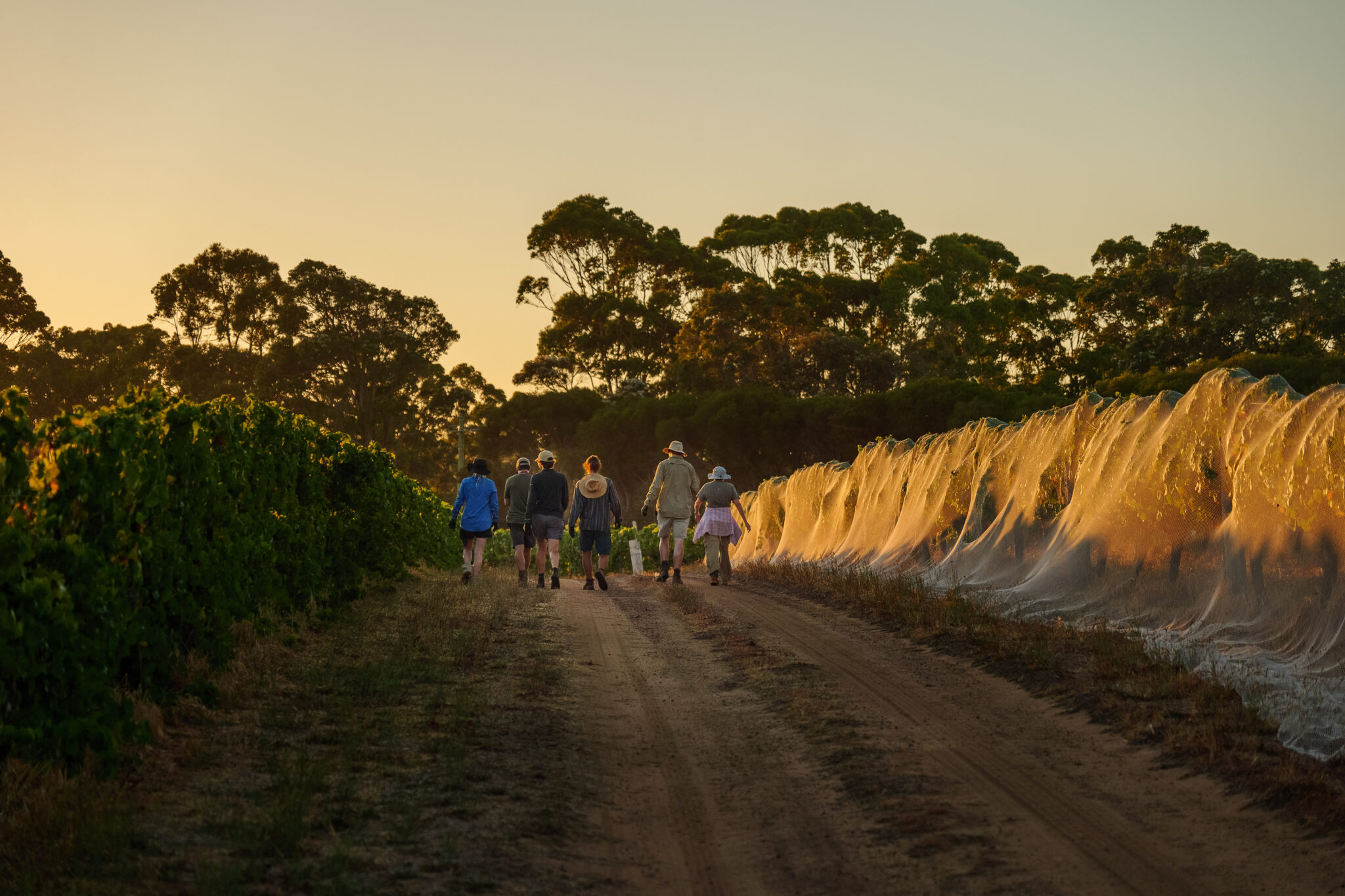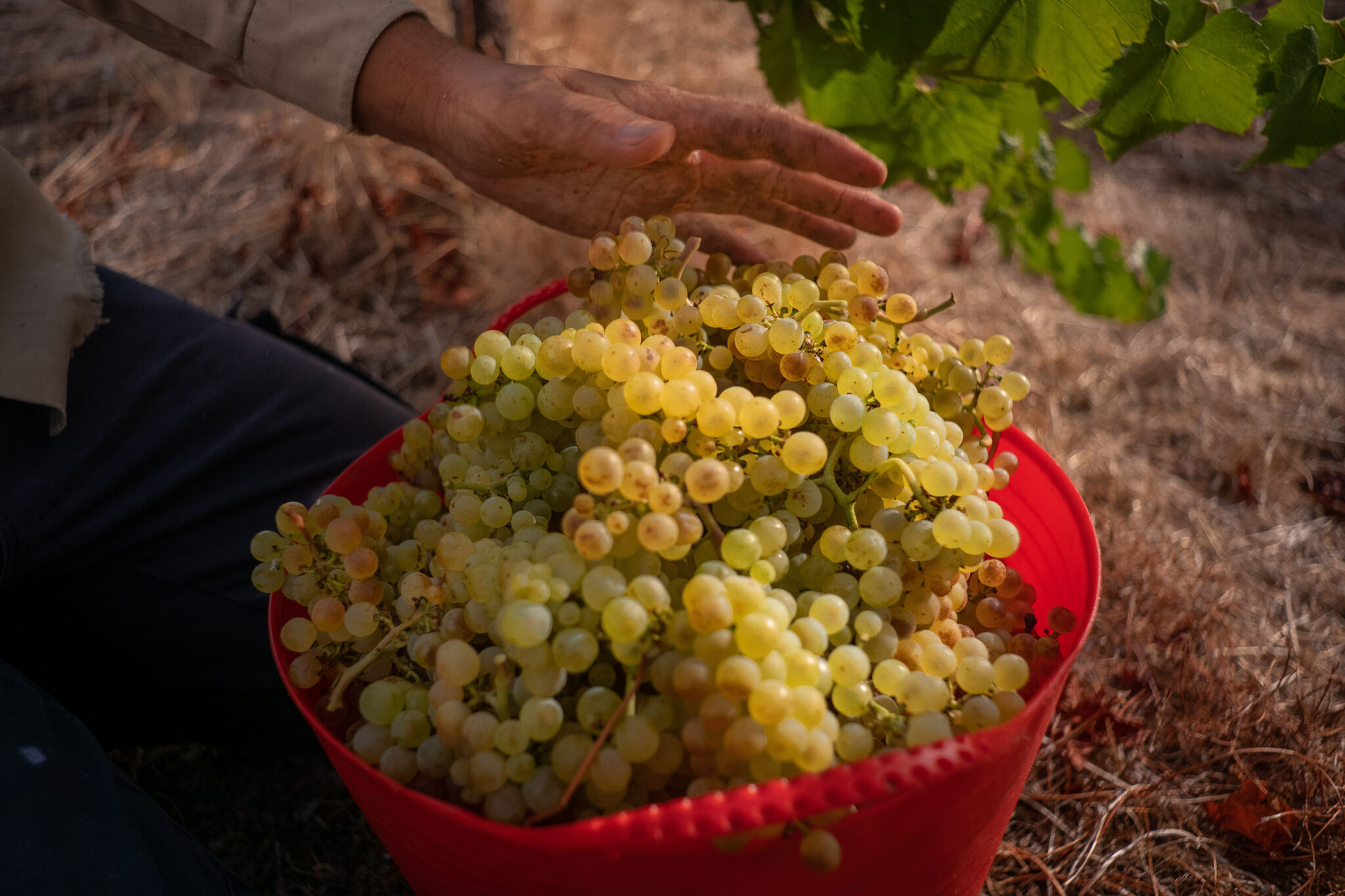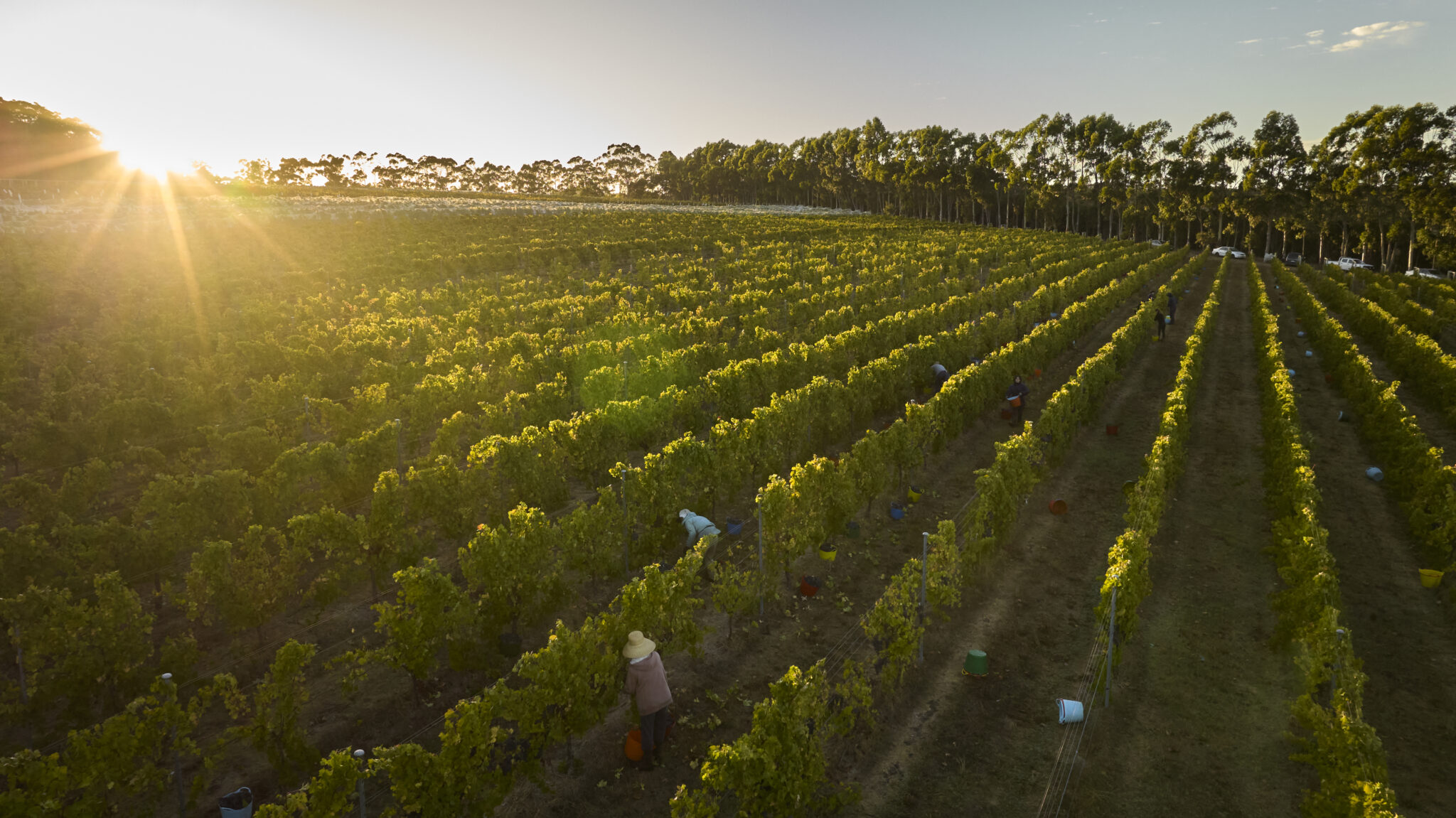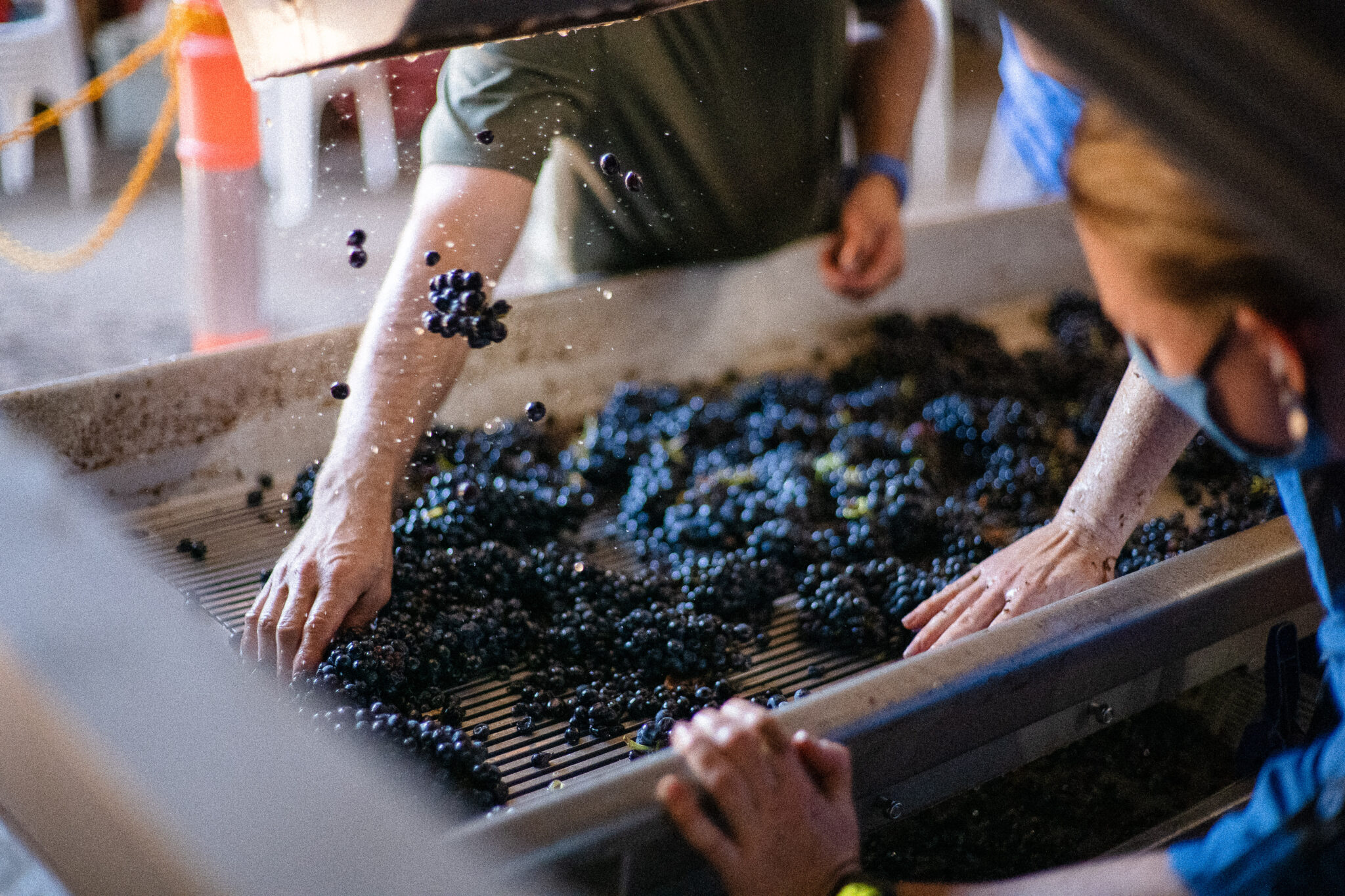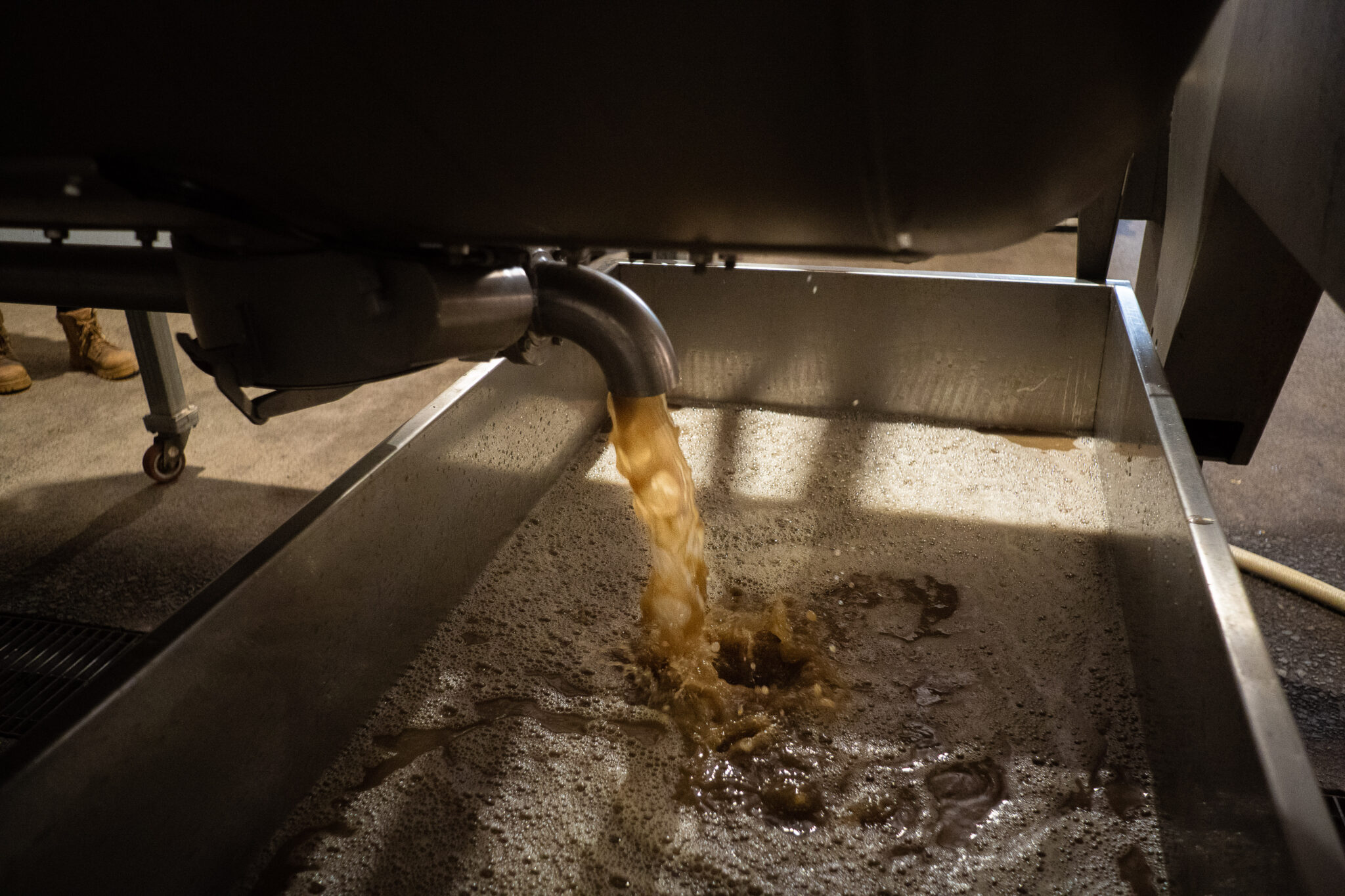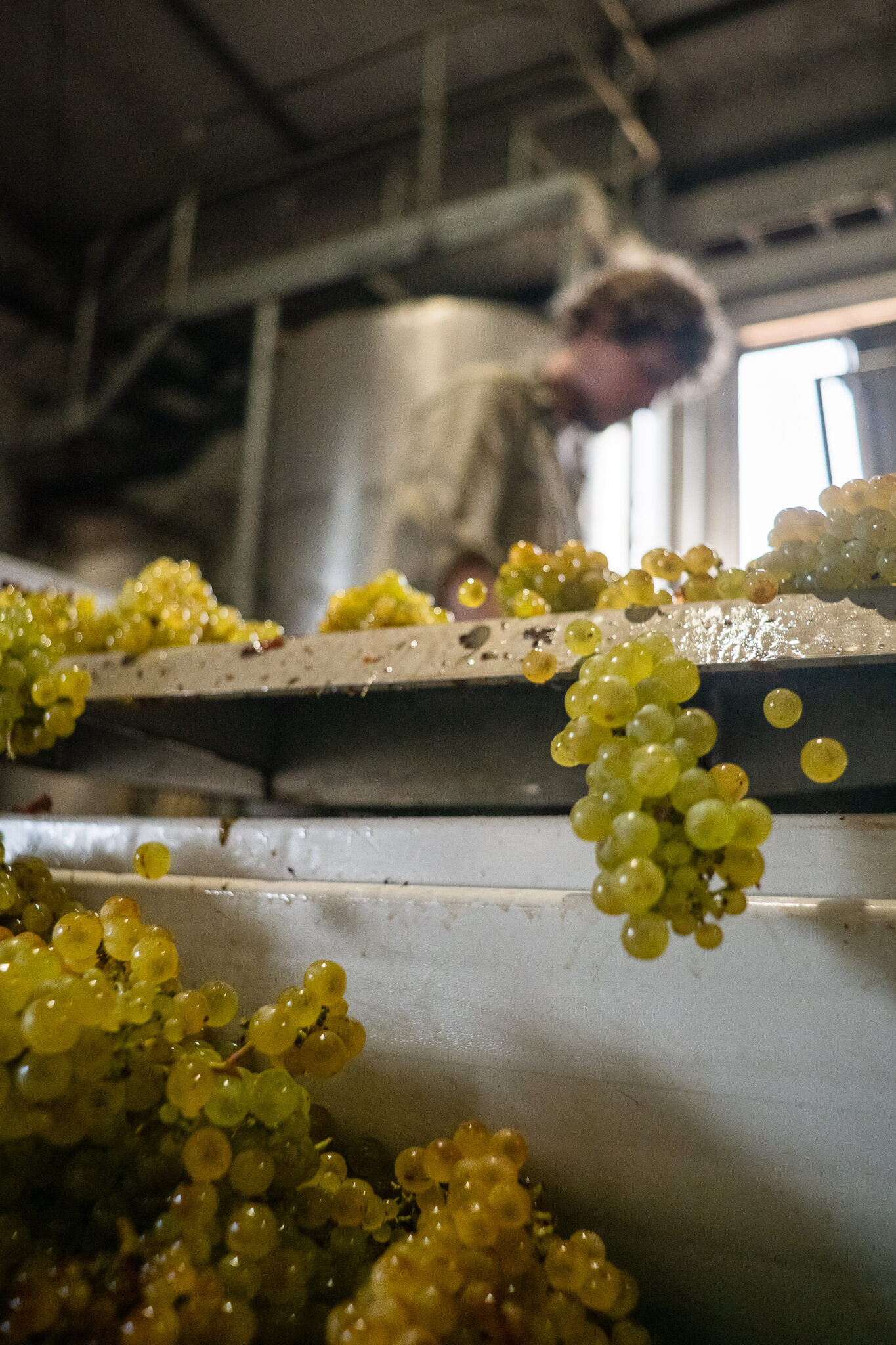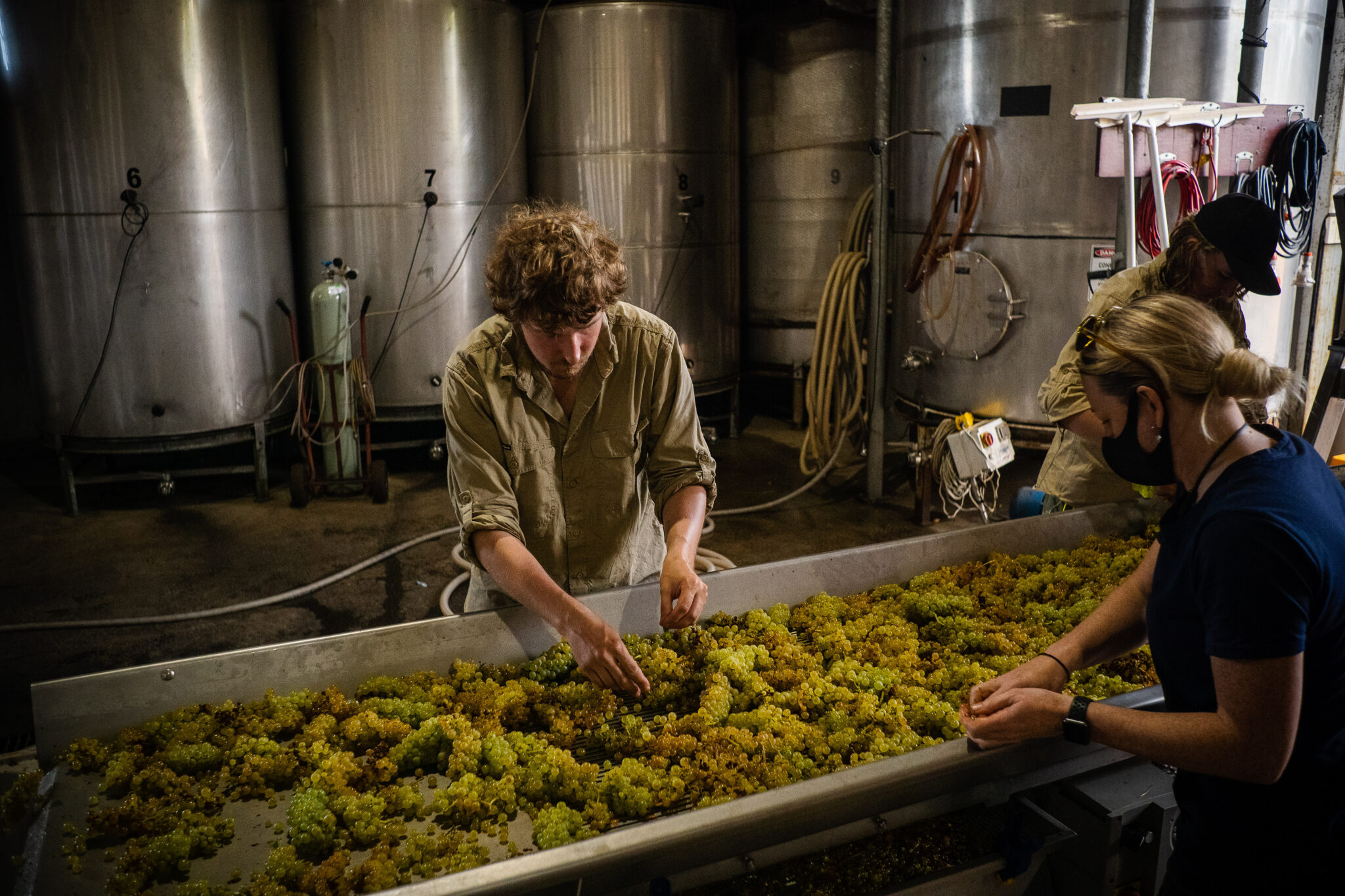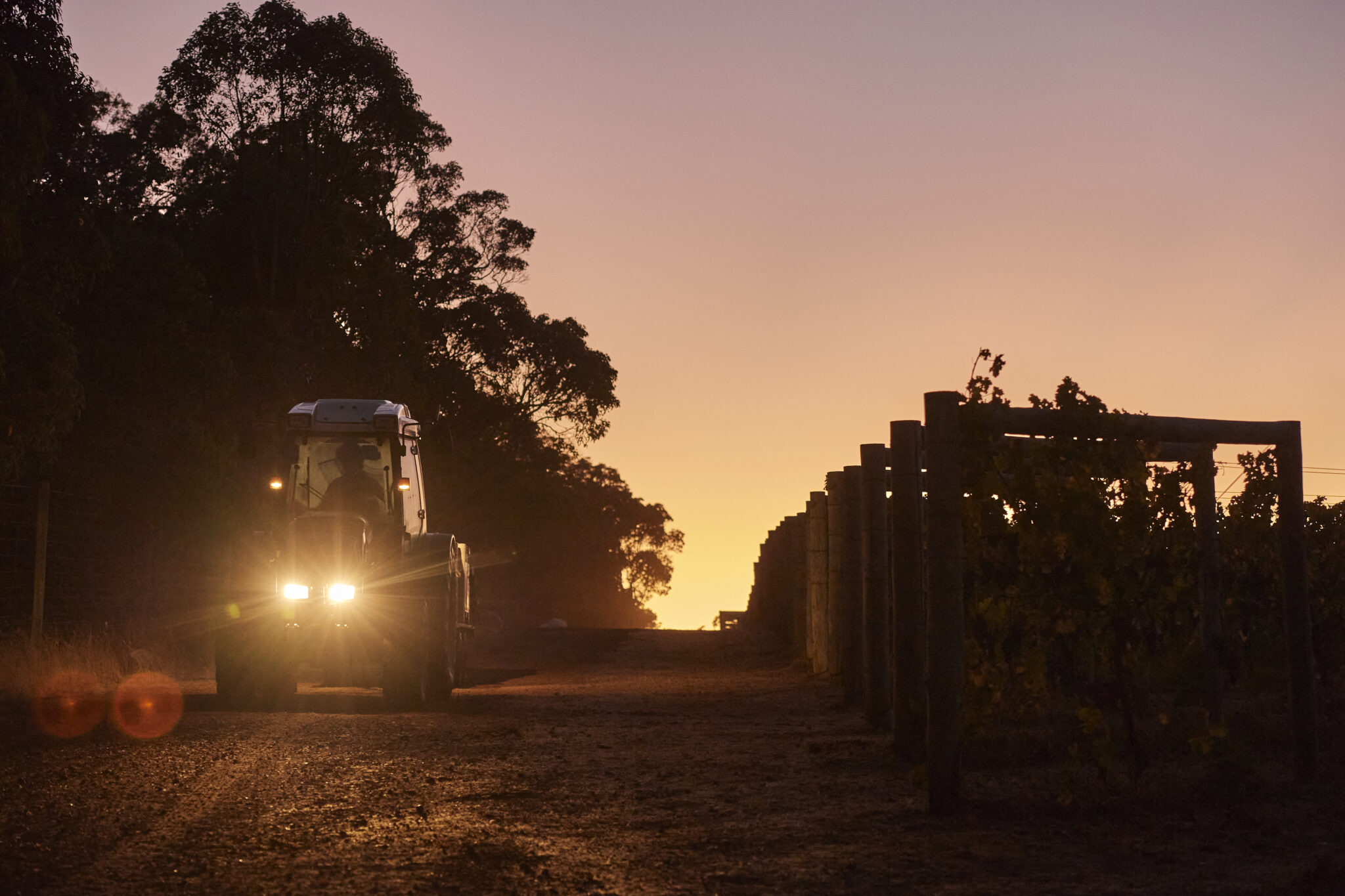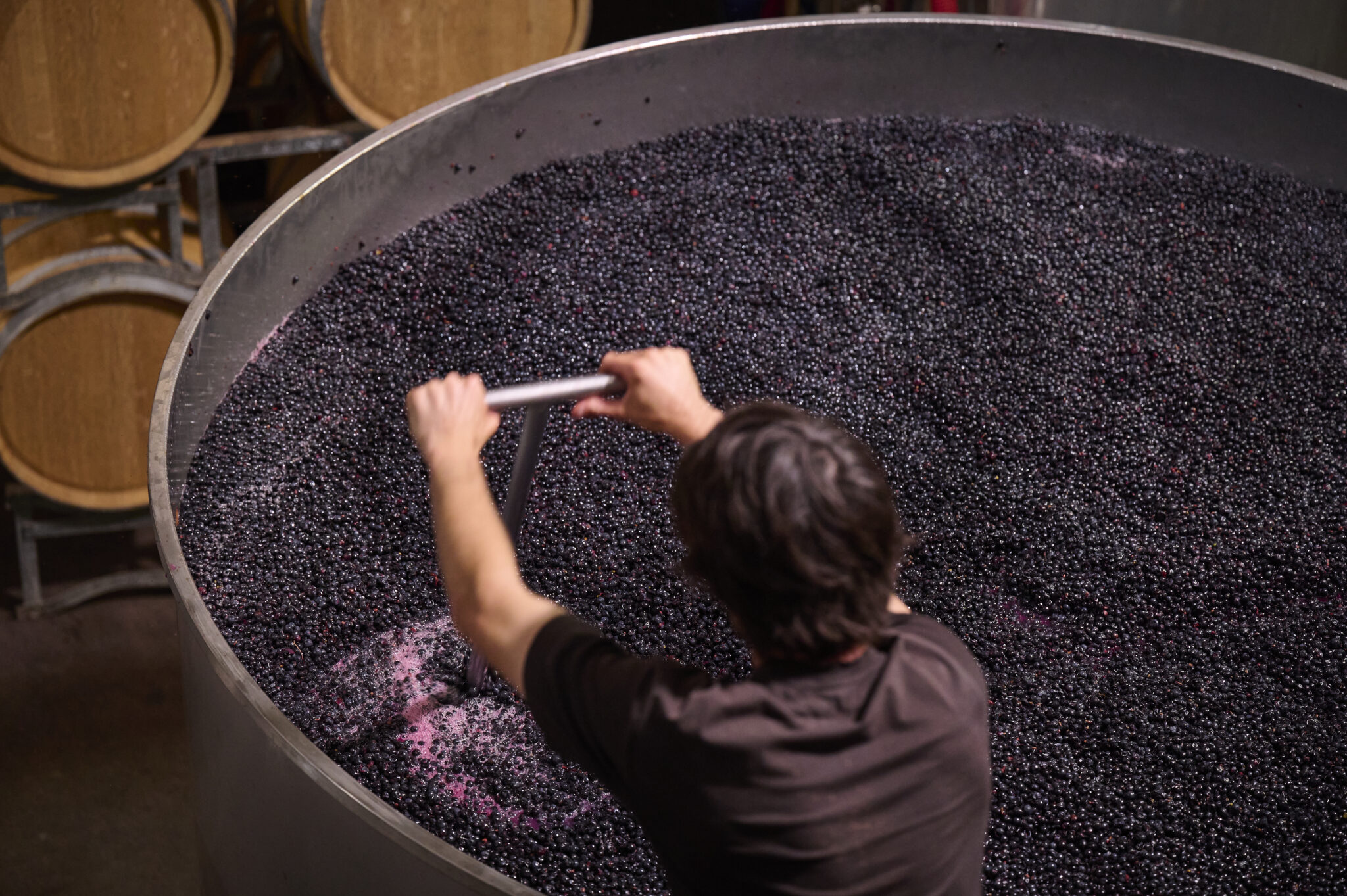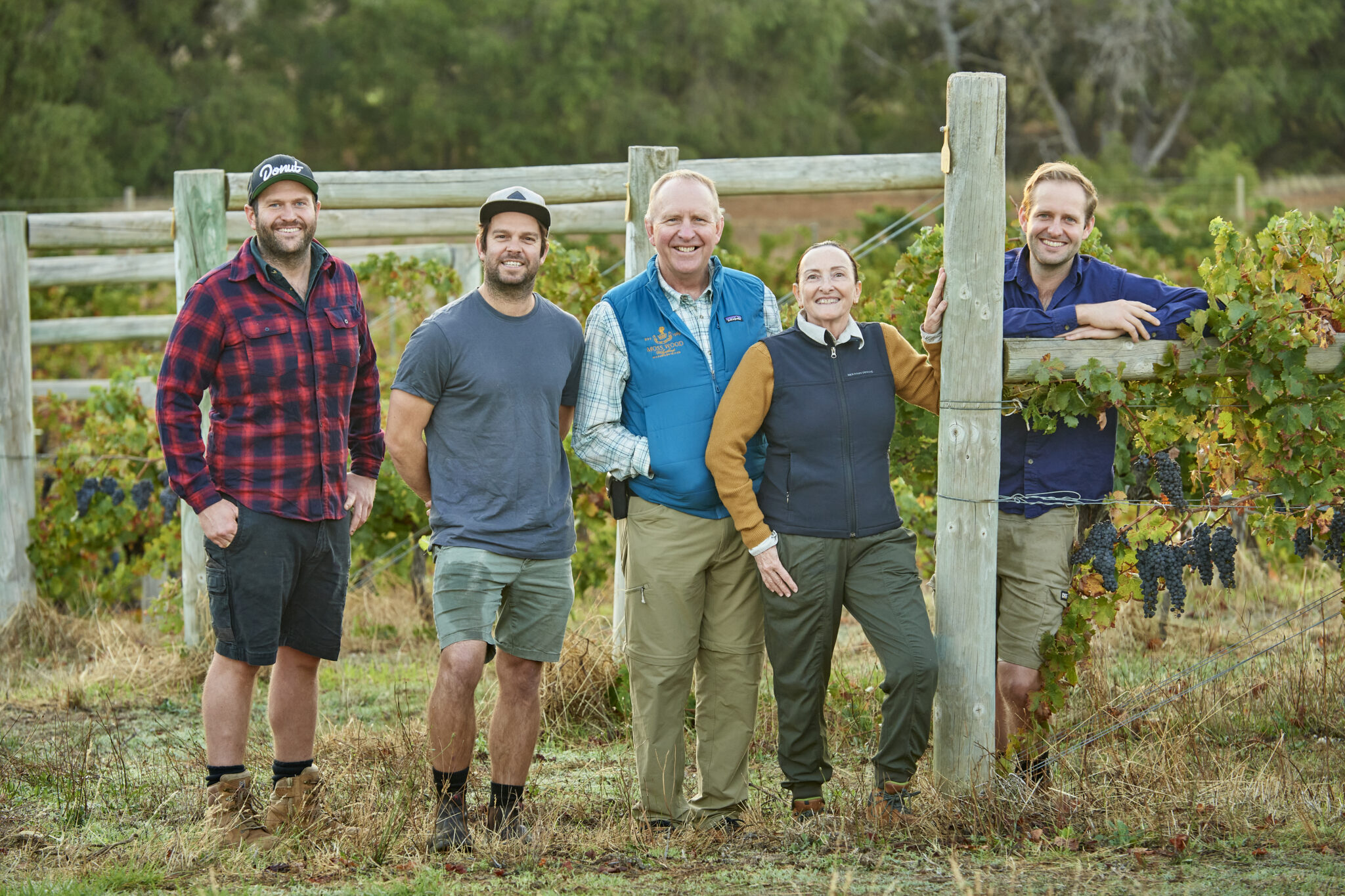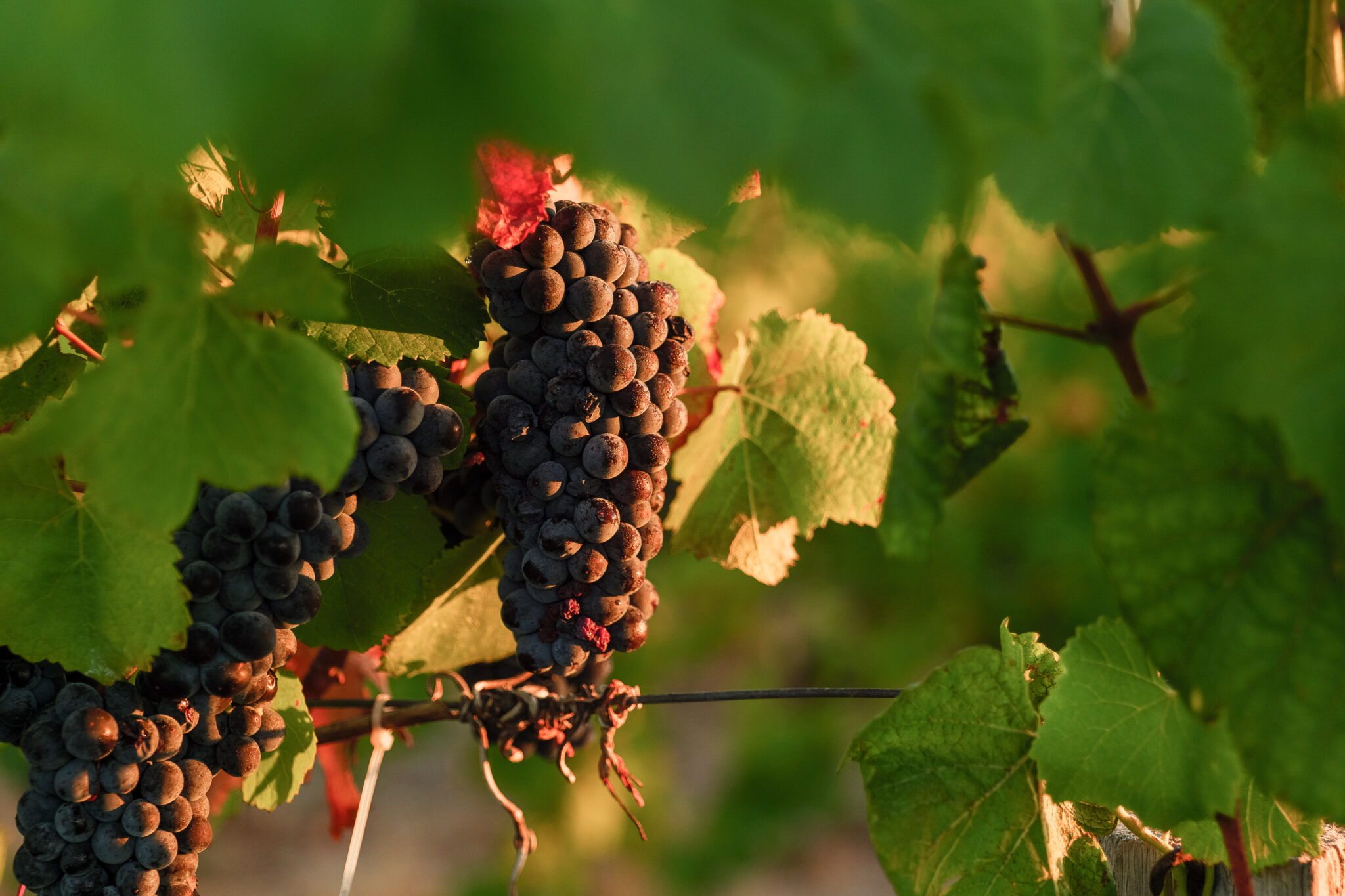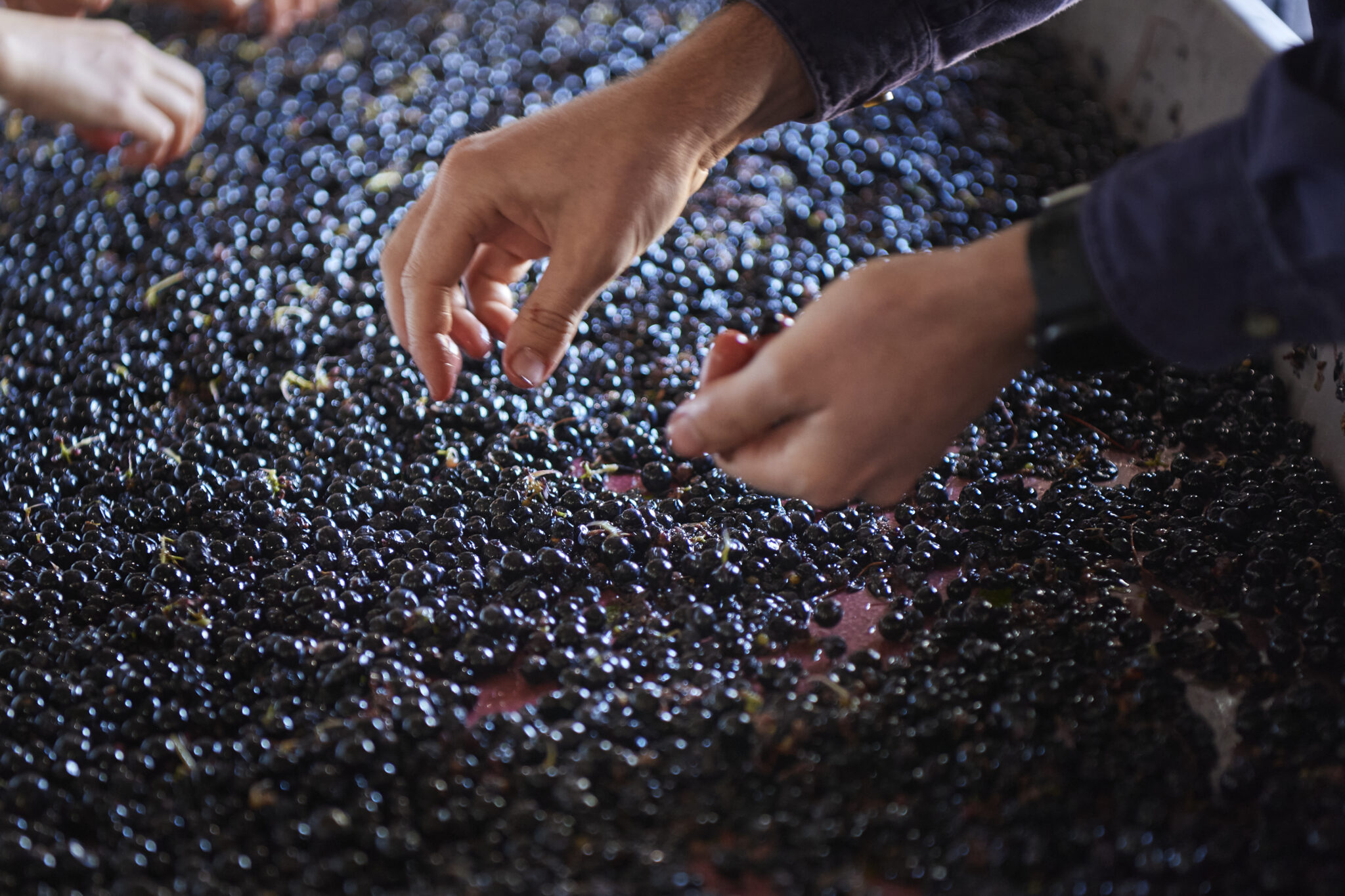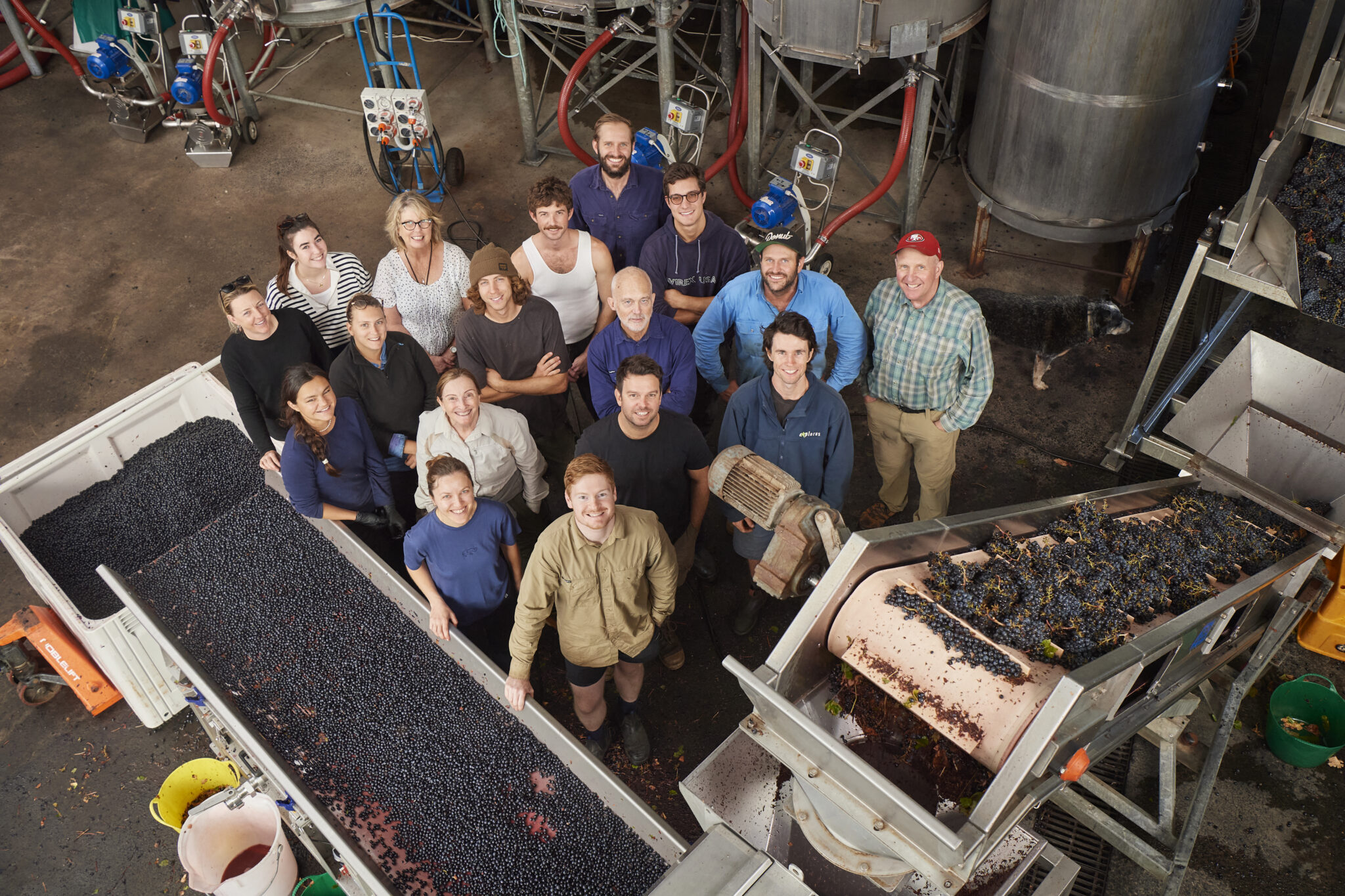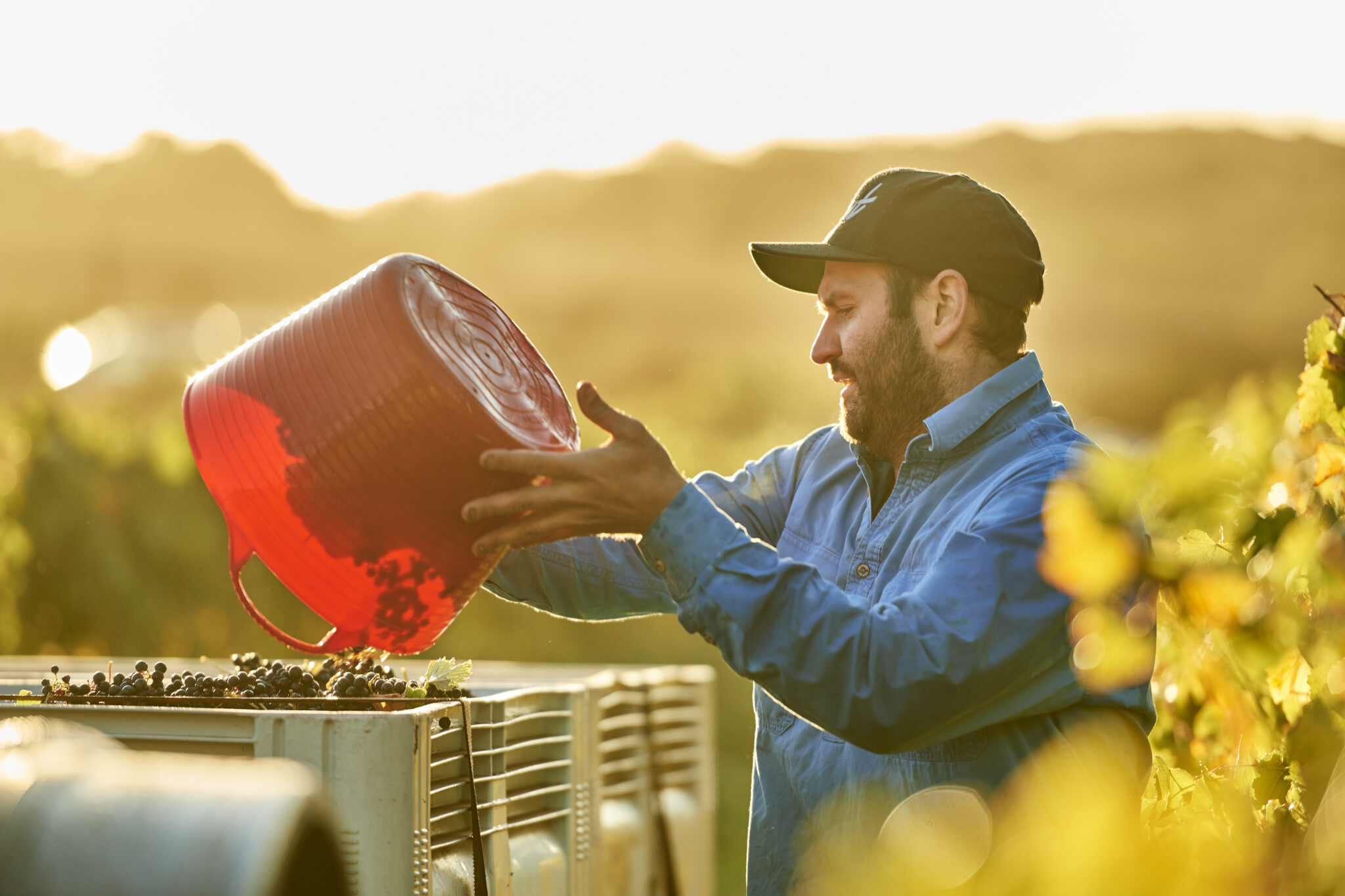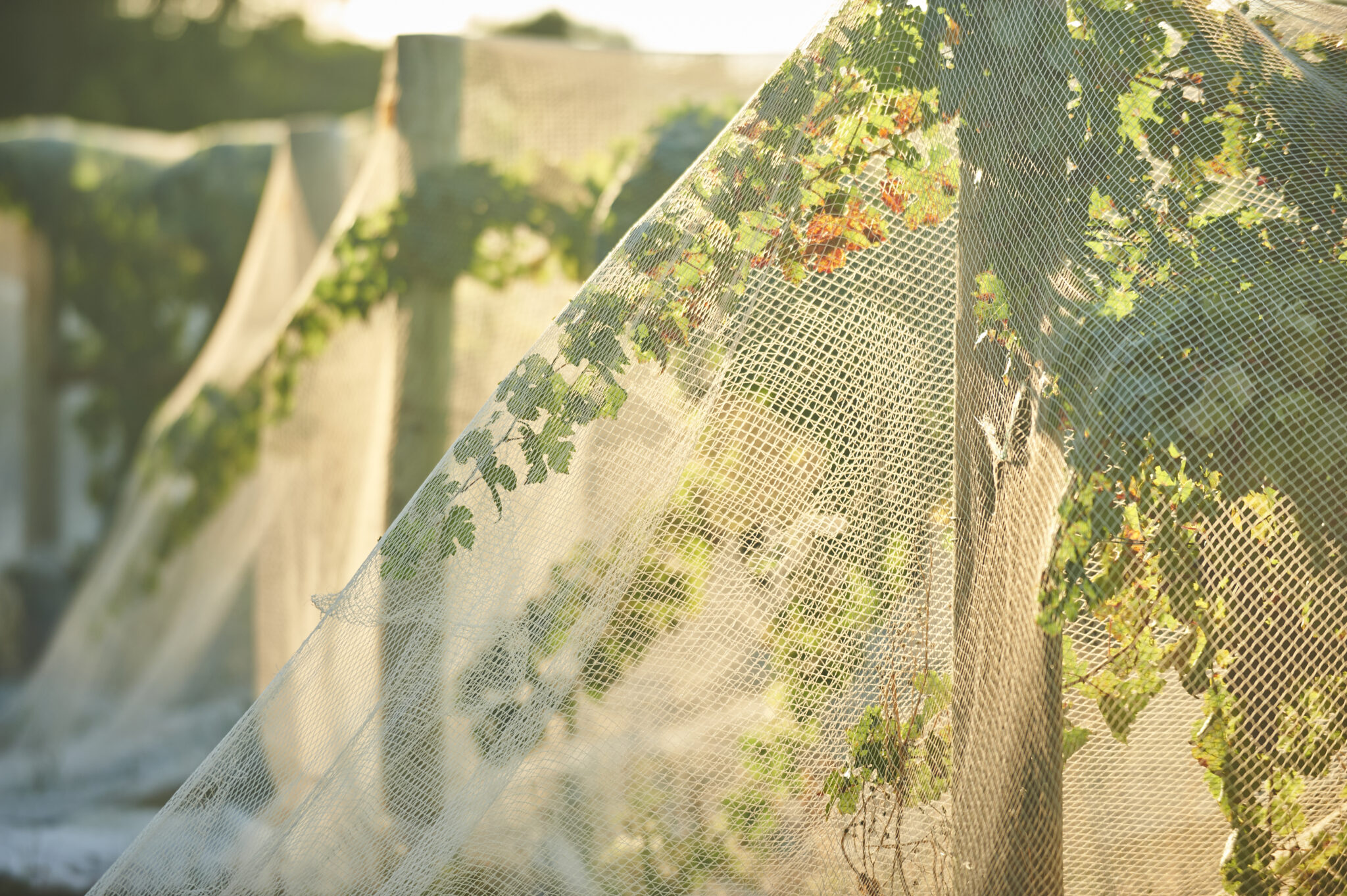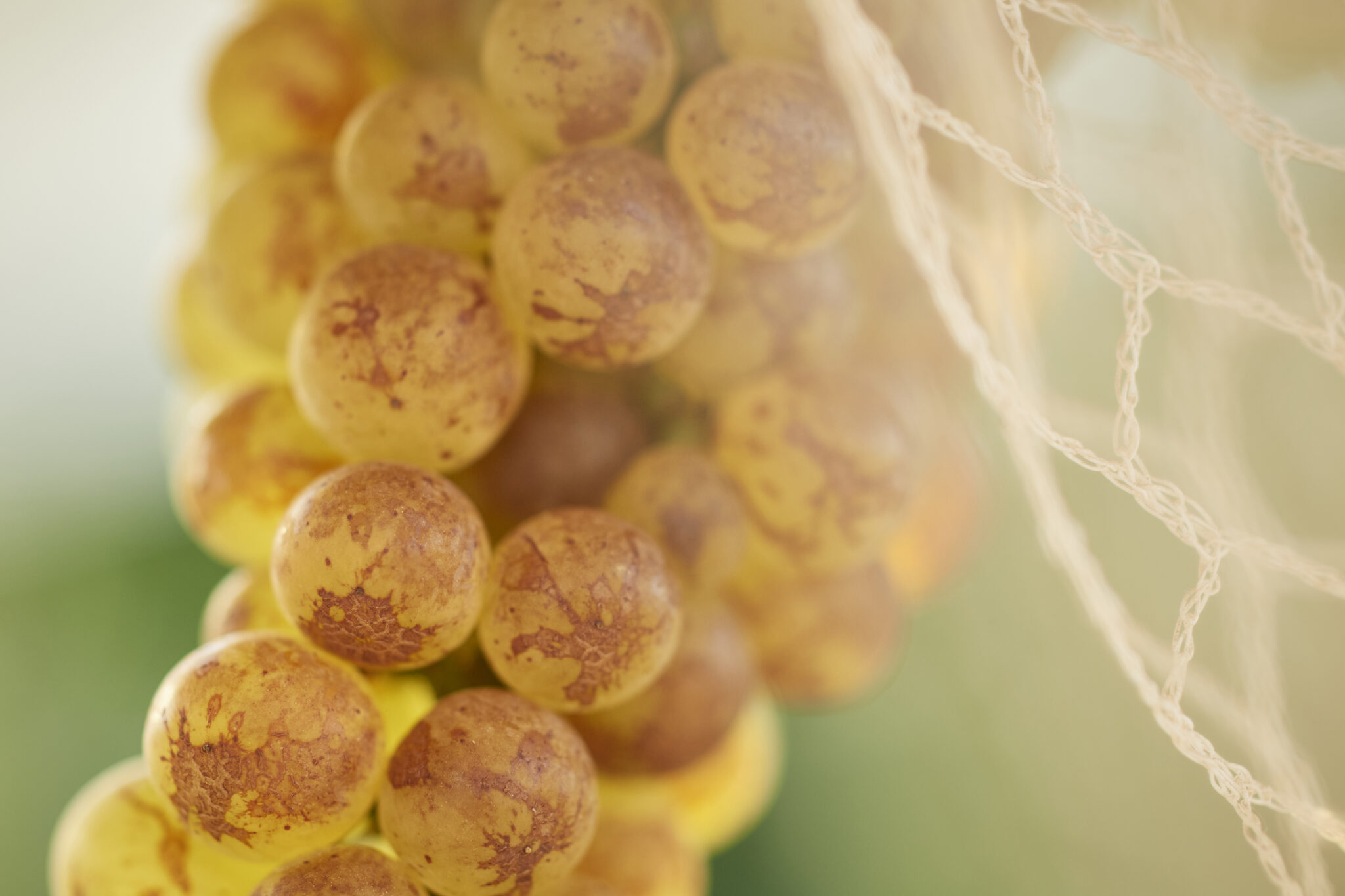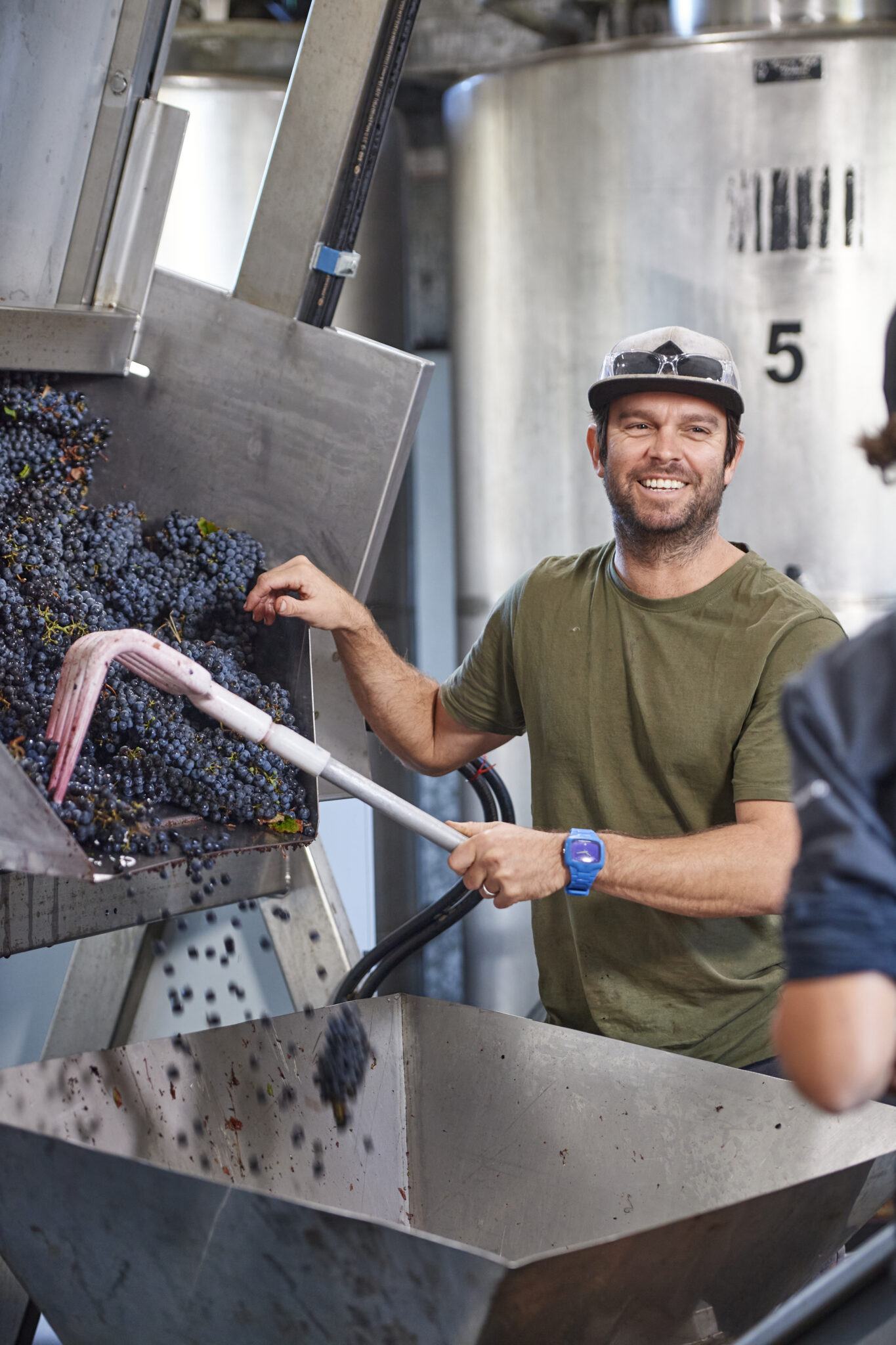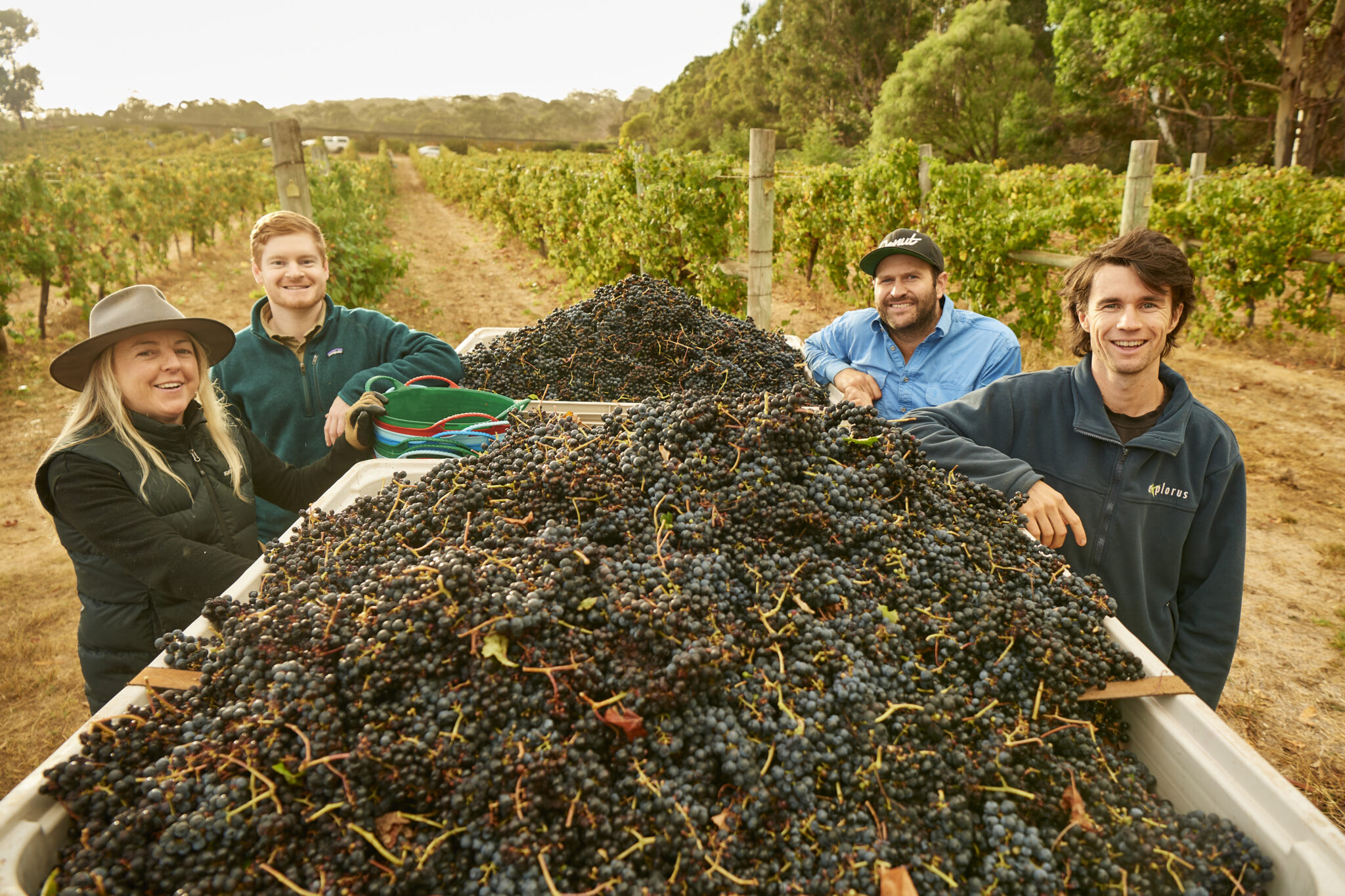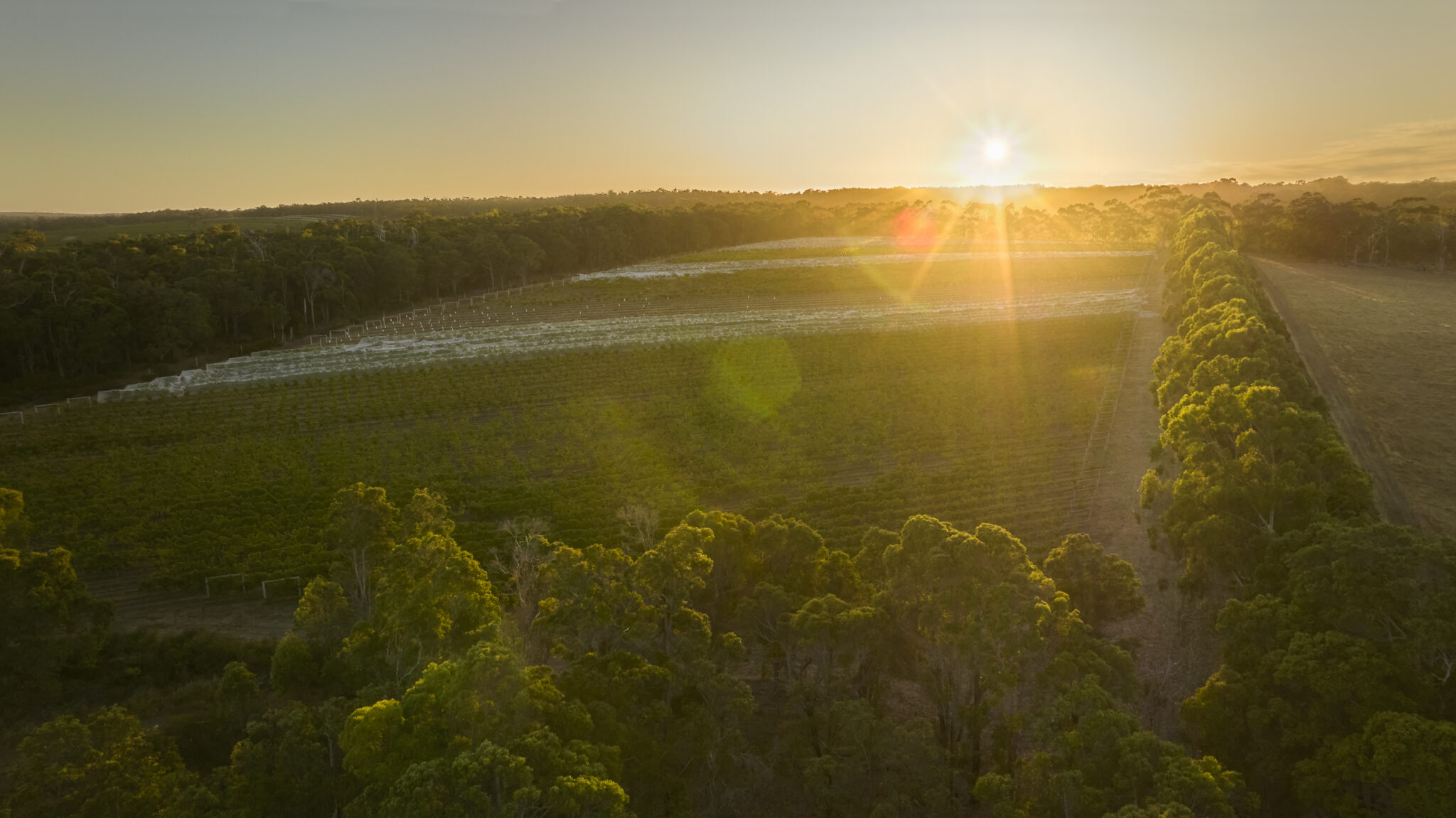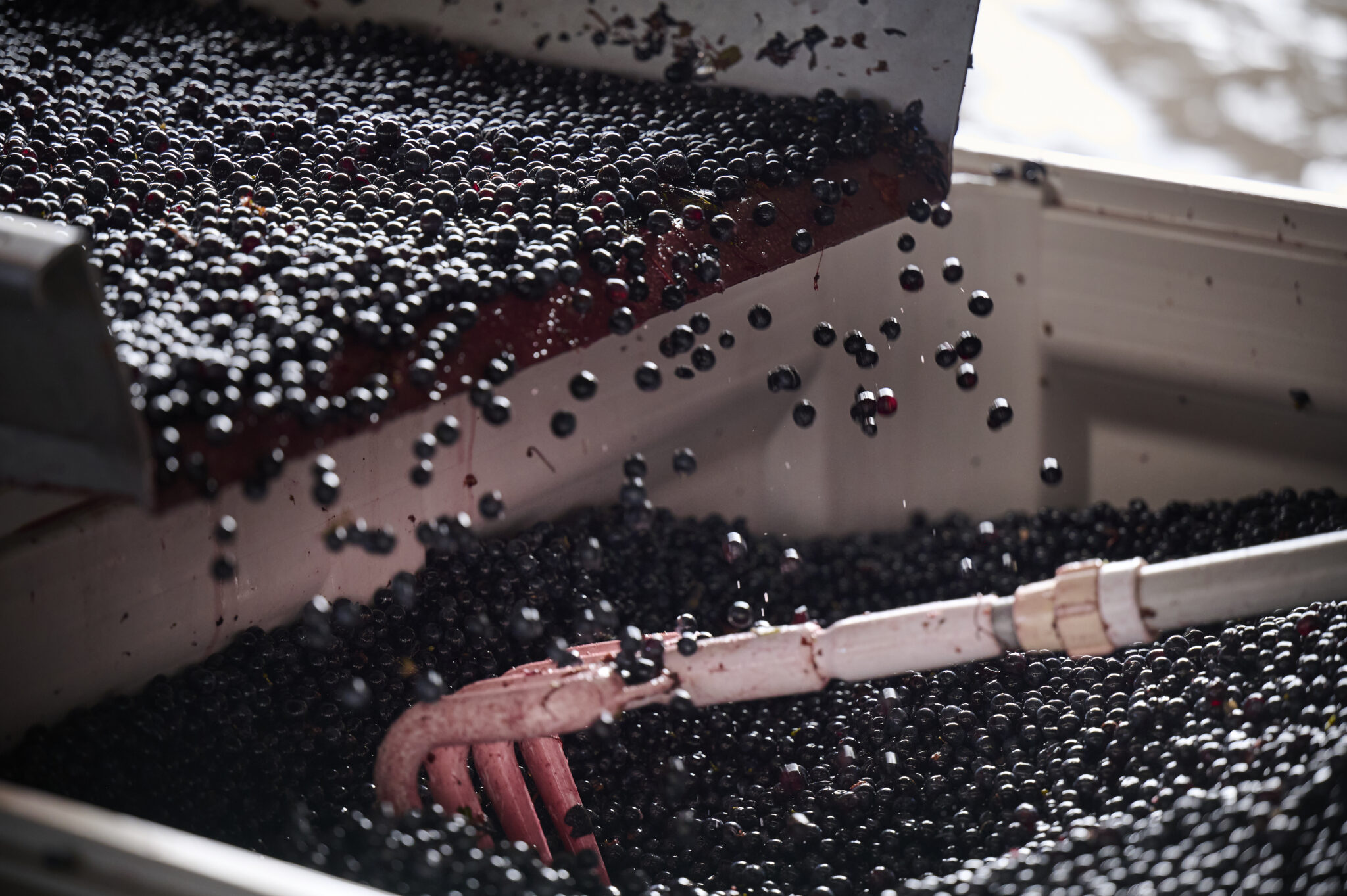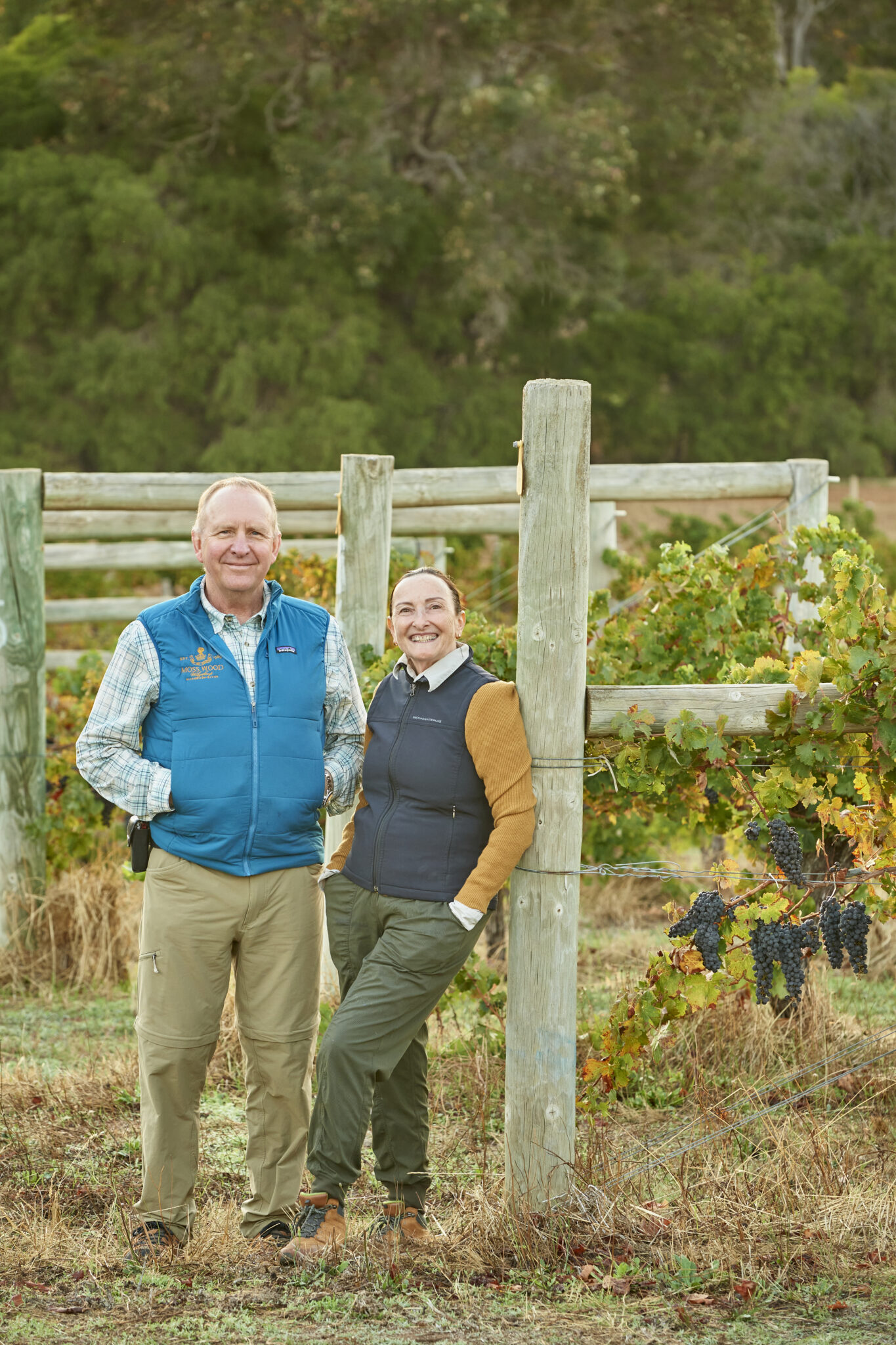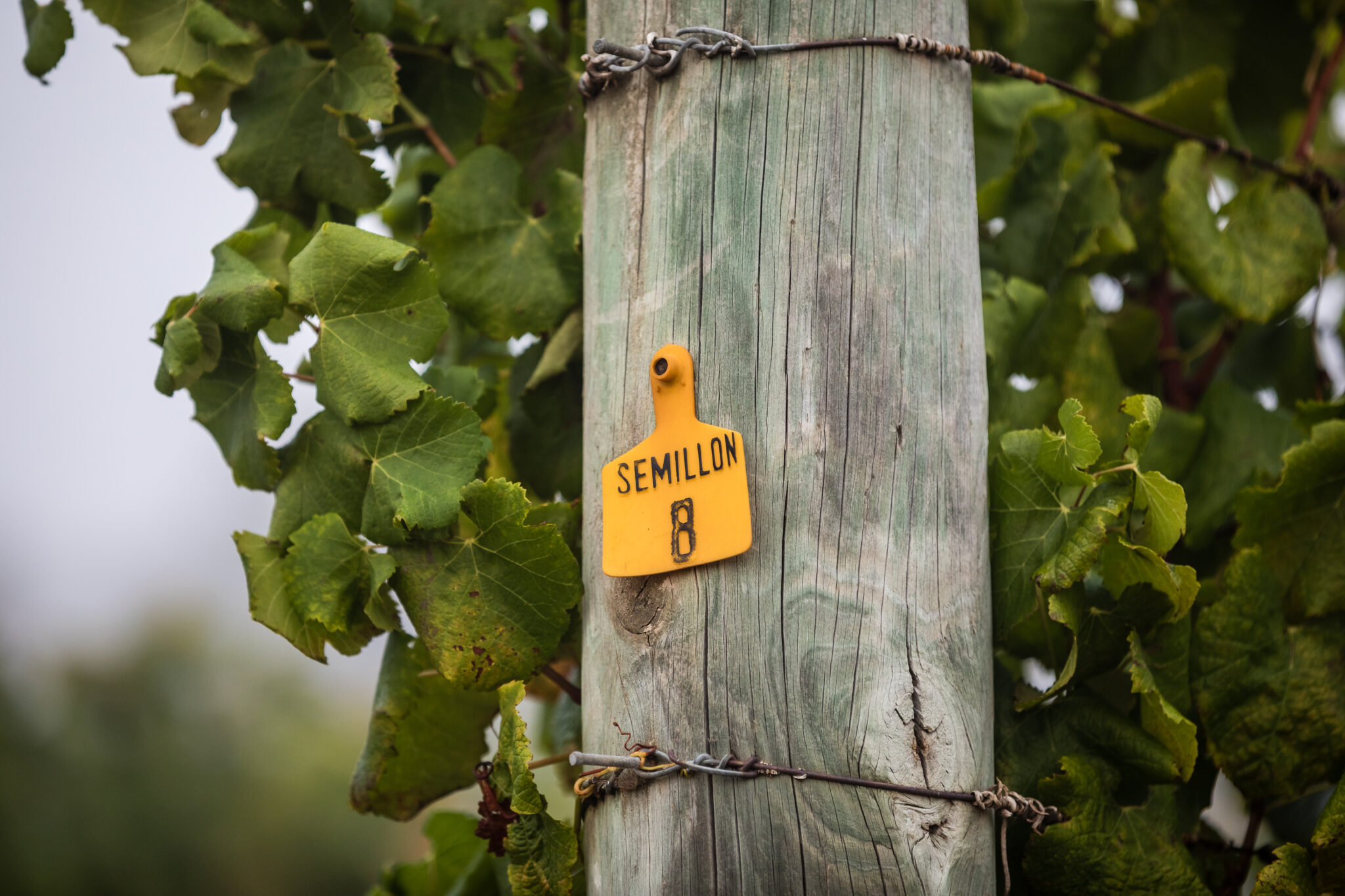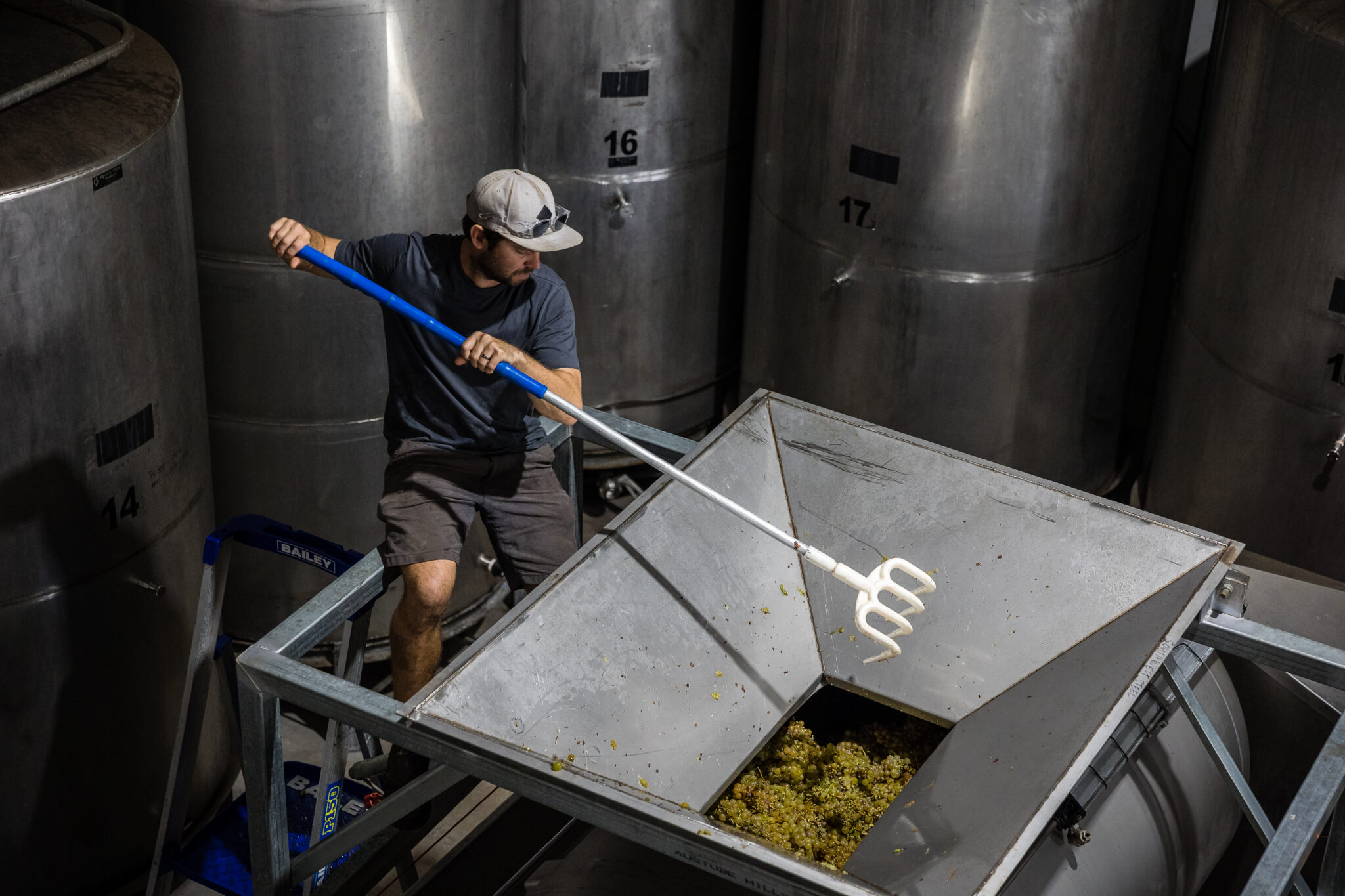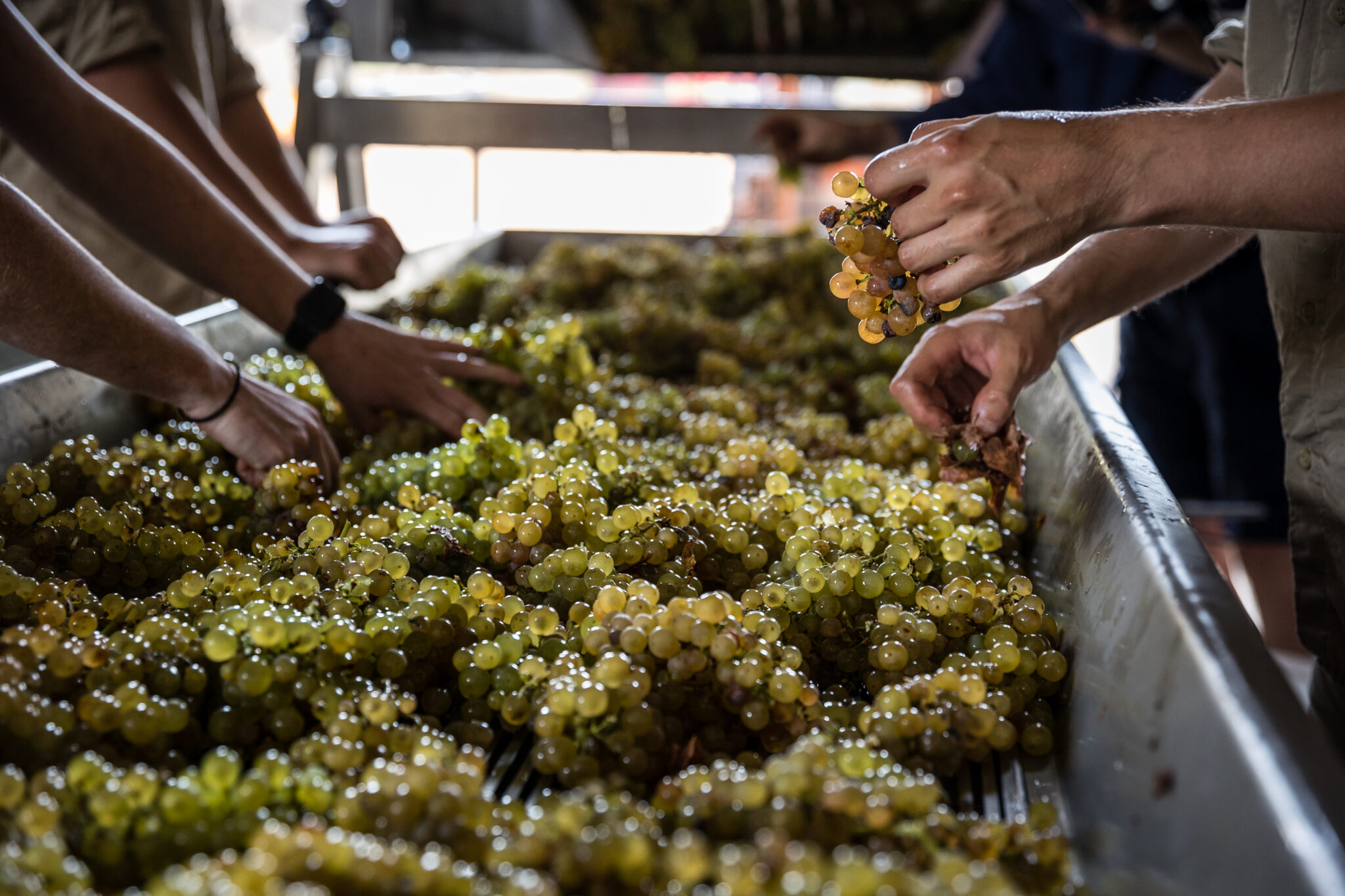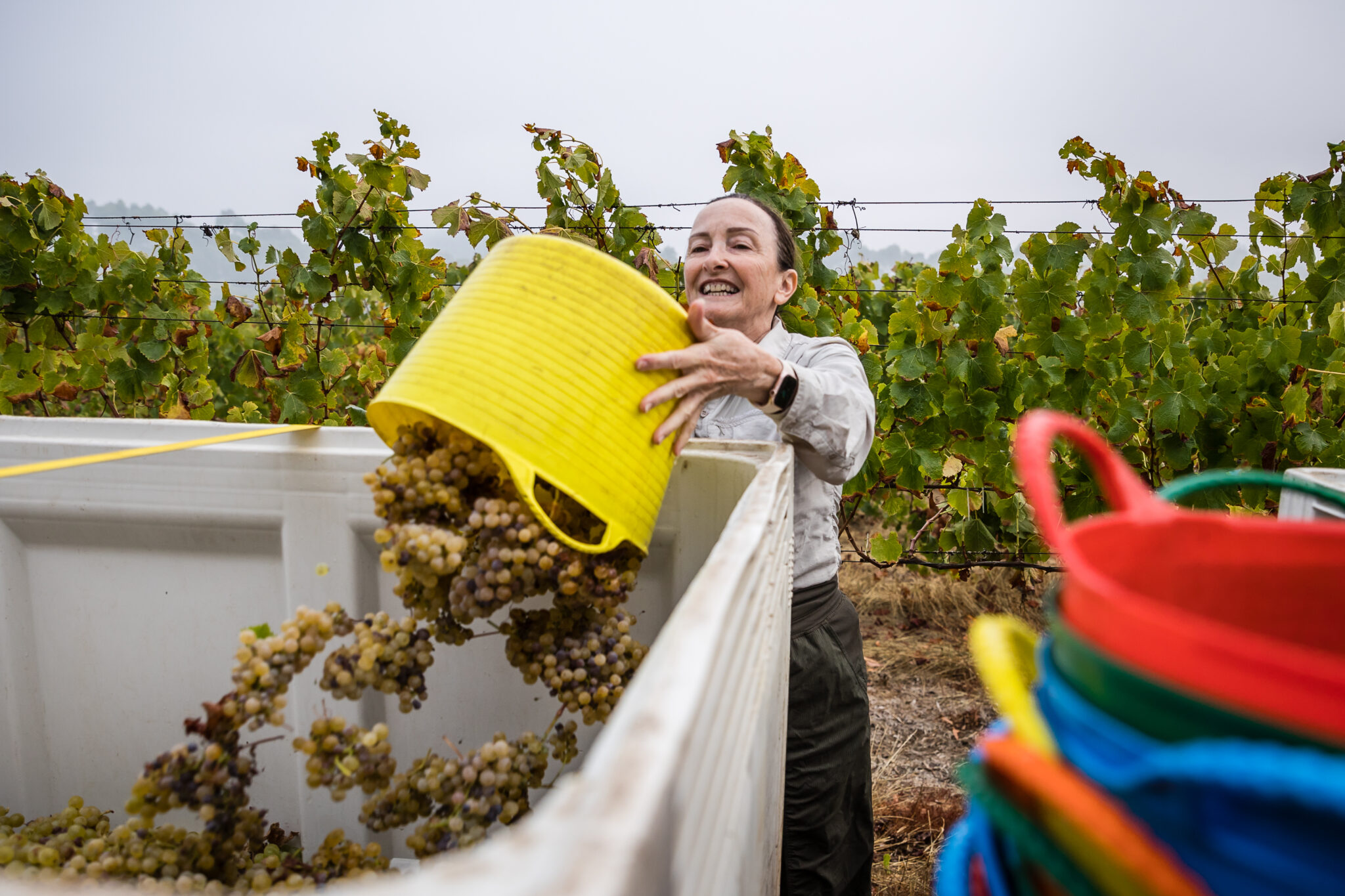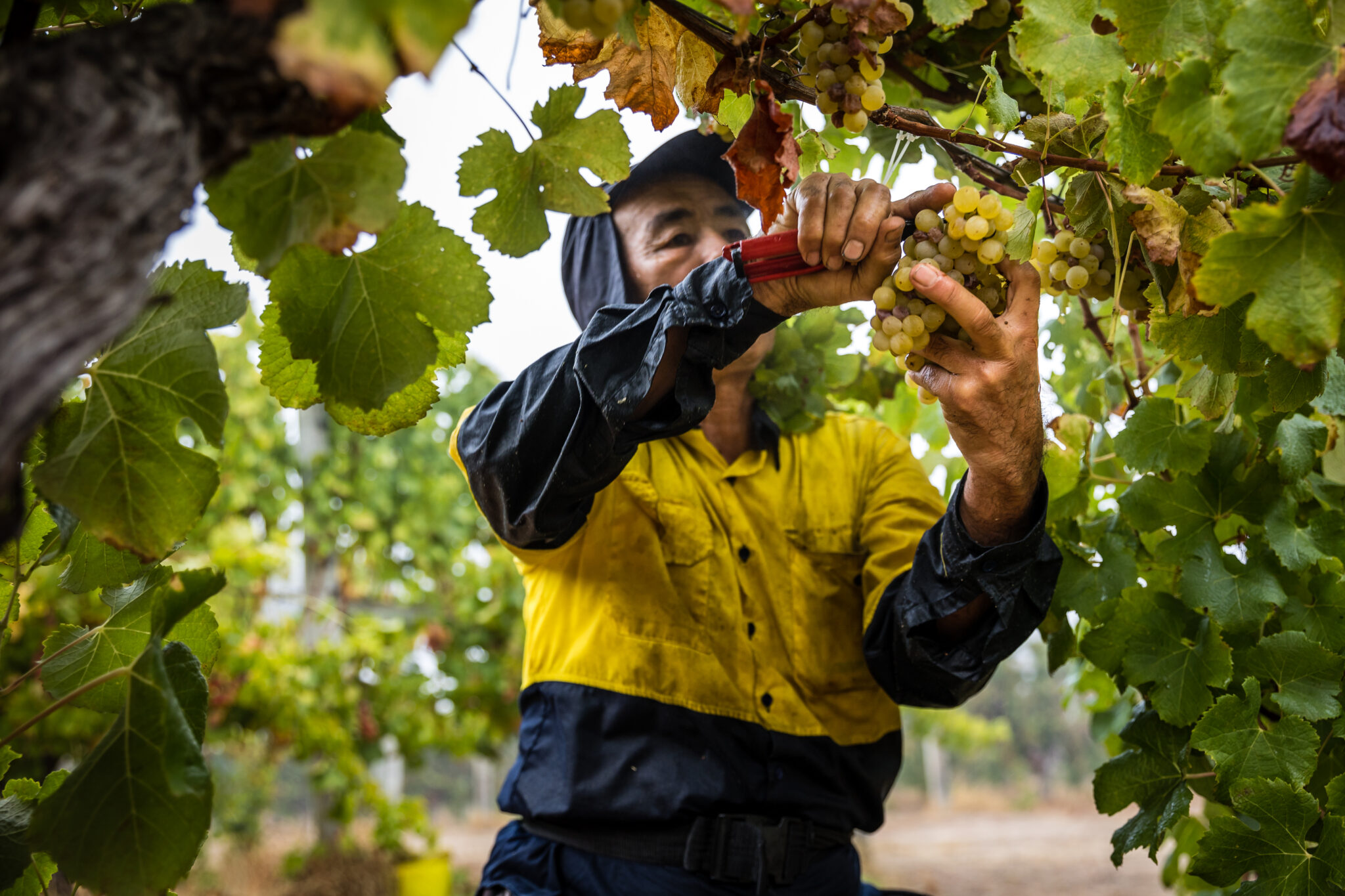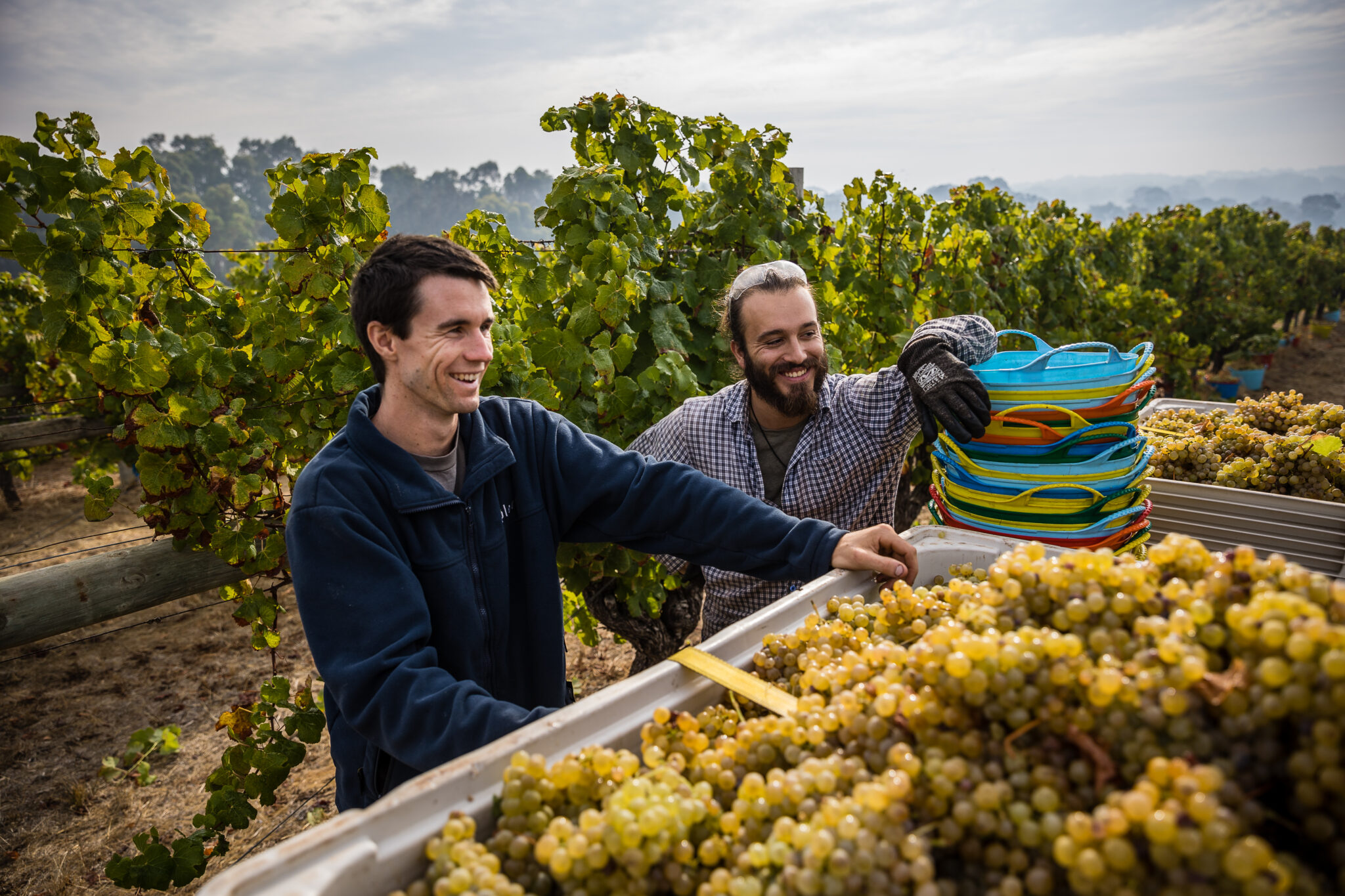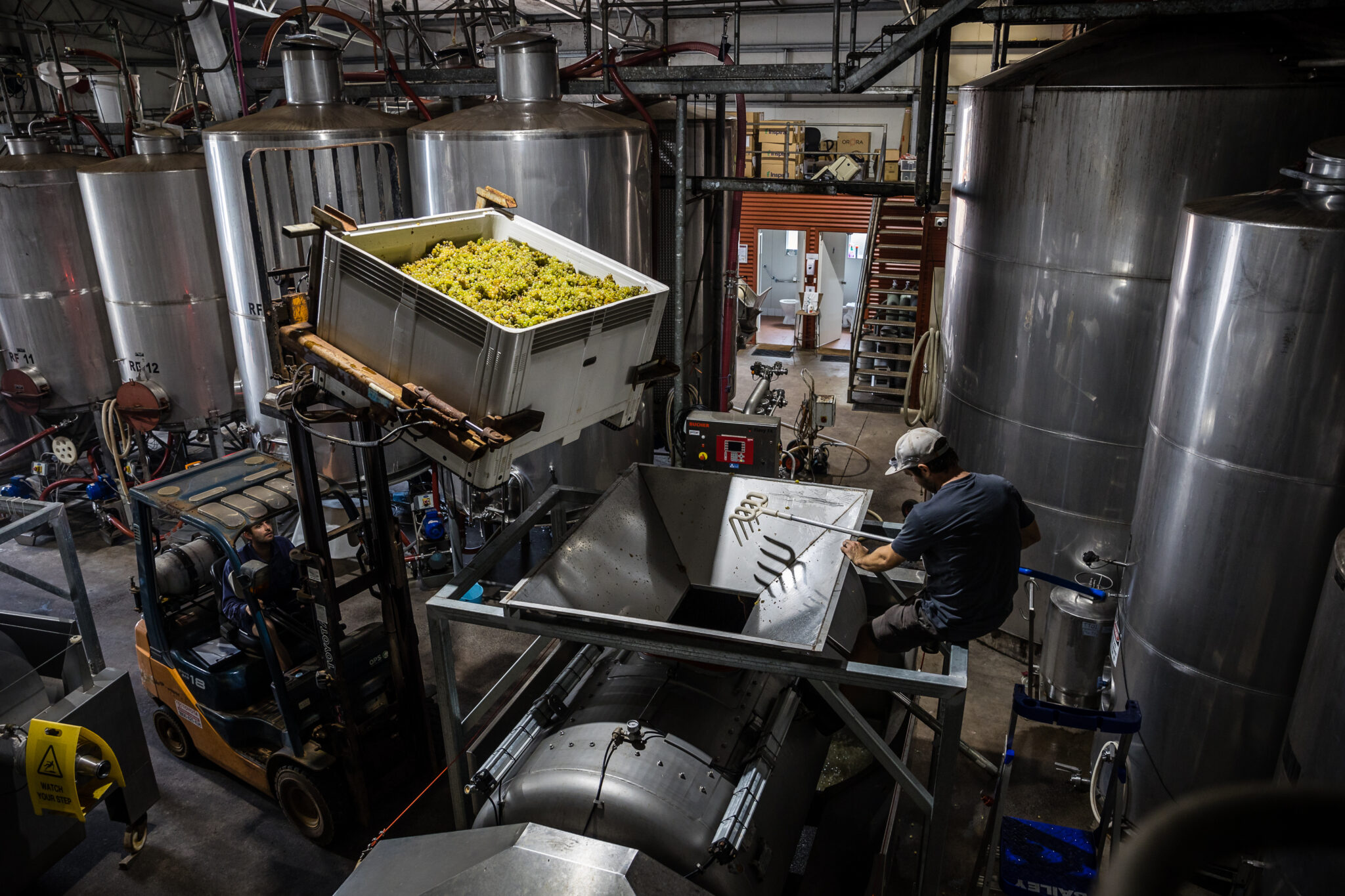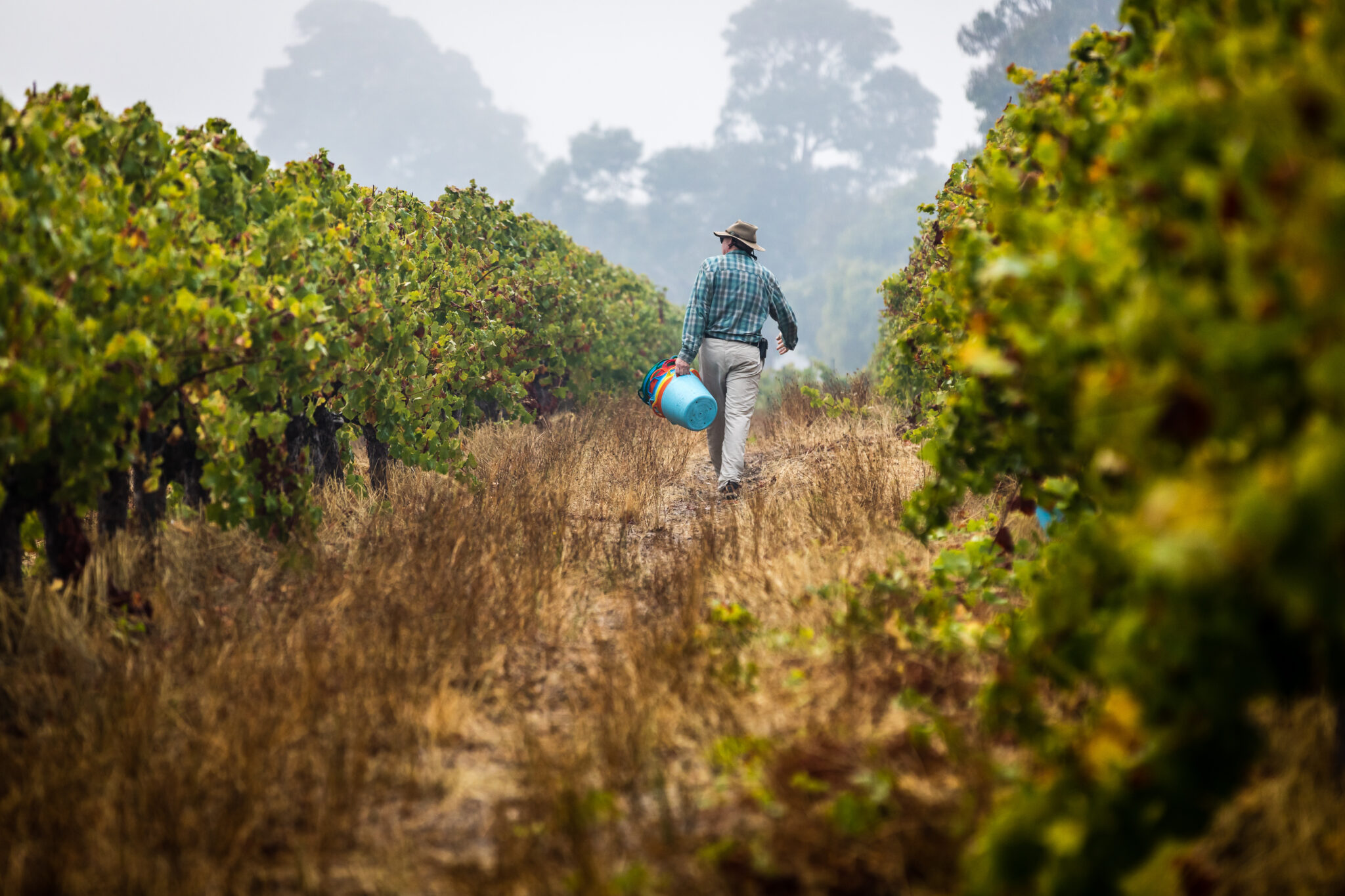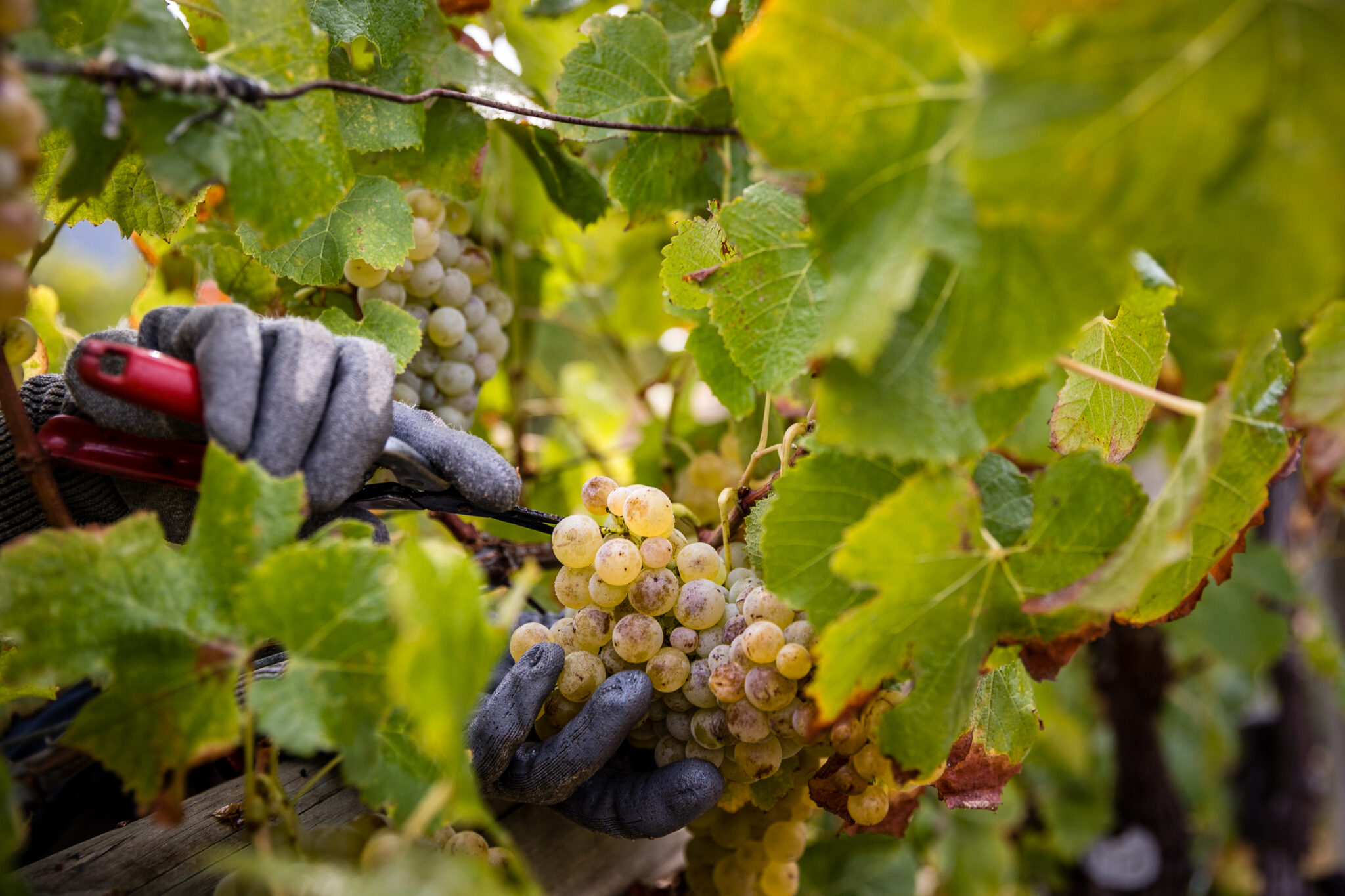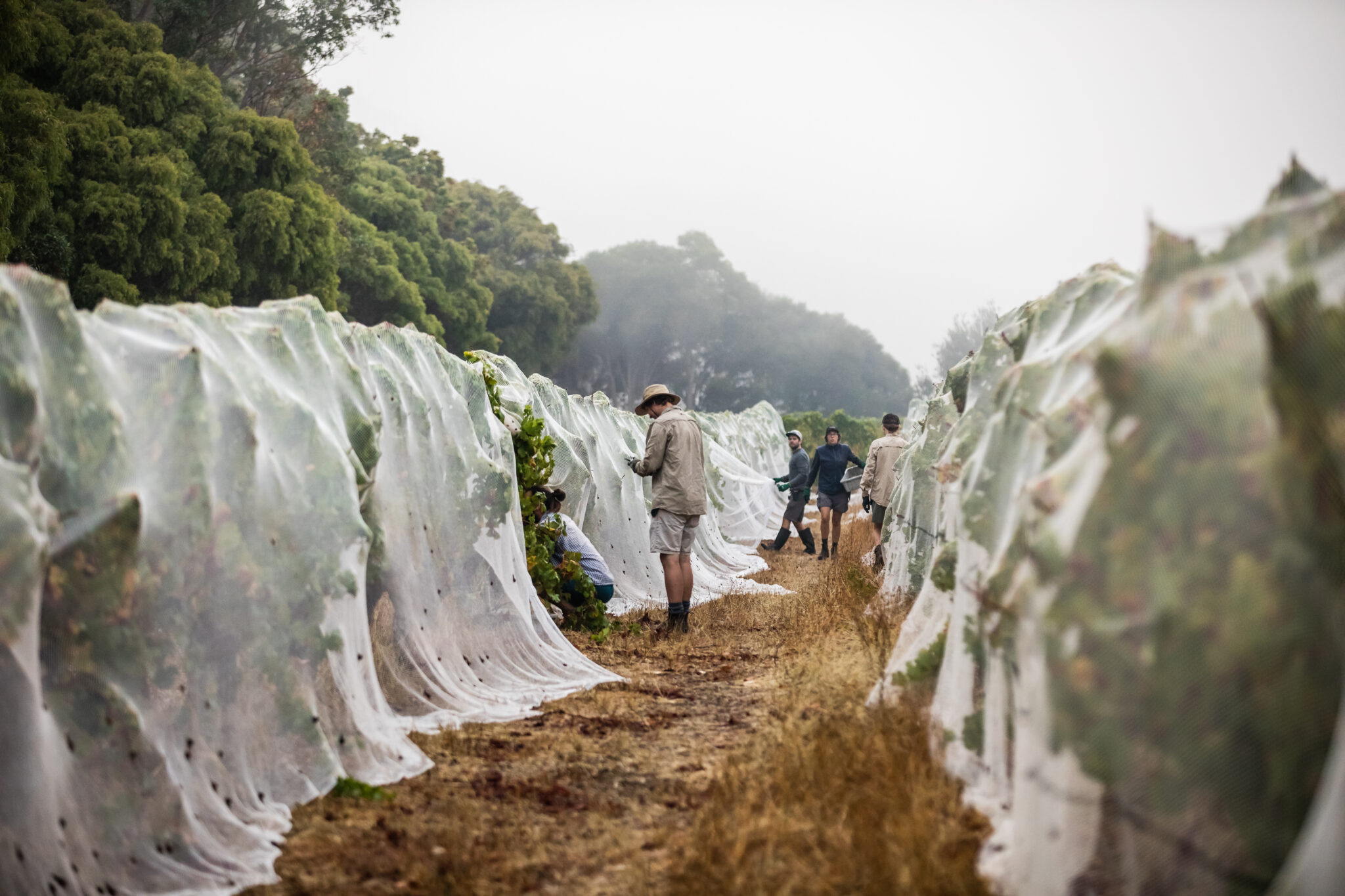Moss Wood Newsletter
Spring News Issue # 118 September 2023
Moss Wood 2022 Chardonnay
Moss Wood 2021 Pinot Noir
Moss Wood 2023 Semillon
Moss Wood 2022 Chardonnay
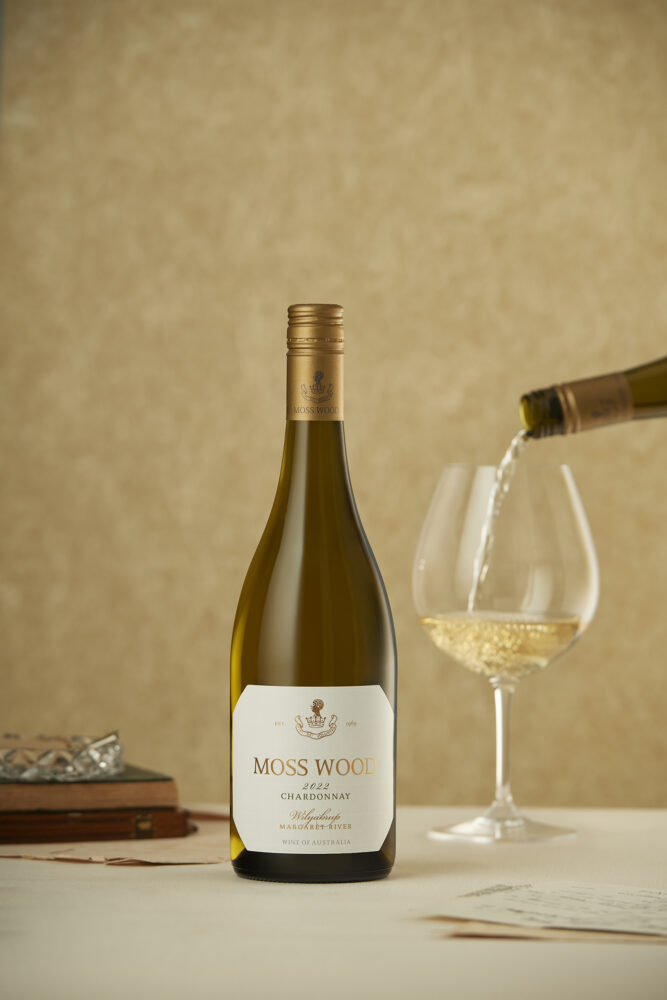
VINTAGE NOTES
As we look back on the 2021/22 growing season, we’re reminded it was one of contrasts. In calendar year 2021, we recorded our highest rainfall since Keith started working at Moss Wood, all the way in 1979. The amount was 1440mm, some 40% above average. Boy, did we have some wet days!
Temperatures were accordingly mild and the vine growth during spring was relatively slow. Chardonnay didn’t start flowering until late October and lasted for 5 weeks. However, the weather was beginning to change because during that time we experienced 11 days of rain and received the relatively low amount of 43mm. The accompanying temperatures were a little on the cold side, when there were 12 days where the thermometer recorded less than 8°C, for a total of 60 hours. Luckily, there was only one night where it got seriously cold and we recorded 3.8°C but the other 11 nights were all around 7°, so not too bad.
Once Mother Nature flicked the switch to “Dry”, that’s where it stayed for most of the season. We only received 15mm through the summer and most of which fell in the first week of February.
The vineyard looked in good shape as the season progressed and so we were a bit disappointed when we started picking, with yields lower than we hoped. Bunch numbers varied a bit but were 3% above average across the board. However, bunch weights were down by 14%, so the final crop came in at 5.96 tonnes per hectare, down 11%.
This seems to have been driven by two main things. It got a bit cold during flowering and that would have caused some poor fruit set. We also had some hot weather around Christmas, some of the hottest experienced by Keith since he’s been here. On Boxing Day 2021, the mercury peaked at 41.2°C, the hottest day since 25th February 1985, when we reached 41.5°C and our overnight minimum on the 27th was a balmy 24°C. All this to say, the timing wasn’t good for the vines and we suspect contributed to smaller berries. After that two day burst, things returned to normal until the 19th January 2022, when we recorded a maximum of 40°C, during a 3 day warm spell and after which we cruised into a relatively mild February and the beginning of autumn.
These sorts of conditions were reminiscent of both 2003 and 1983, although Keith’s view is the 2022 is more like the latter. Having said that, the impact of the early arrival of autumn can be seen in the harvest dates. Despite the two heat spikes, the growing season was relatively long, with Chardonnay taking 121 days to go from flowering to harvest, 6 days longer than usual, with an average temperature of 20.3°C, so a warm year. For context, 2012, our warmest year since our weather station data began in 1999, was 20.5°C and 114 days from flowering to harvest, while in 2021, a cool year, it was 18.6° and 137 days.
Returning to the point, the final 6 weeks of ripening took place in very pleasant conditions and the fruit flavours evolved at a leisurely pace and full ripeness was evident by 9th March.
PRODUCTION NOTES
All the fruit was hand picked and then delivered to the winery where bunches were sorted and transferred to the presses. The pressed juice was clarified in stainless steel then seeded with multiple yeast strains for primary fermentation. Once underway, temperatures were controlled to 18°C. At the halfway stage, once the aggressive yeast growth is completed and the heat production moderates, the juice was racked to wood. All the barrels were 228 litre French oak and 54% were new. After a full malolactic fermentation, all the barrels were blended, the finished wine was adjusted and returned to oak, where it stayed for 16 months, until June 2023. It was then racked to stainless steel, where fining trials were carried out but none improved the wine, so it is unfined. It was then sterile filtered and bottled on 4th July, 2023.
TASTING NOTES
Colour and condition :
Medium straw hue with green tints. Bright condition.
Nose :
Classic Moss Wood Chardonnay showing bright aromas of peach, white nectarine, rock melon, limes, malt biscuit and roast cashew. The background has multiple components with a touch of minerality as well as caramel, butter, cloves and soft, spicy oak.
Palate:
The initial impression is one of freshness, with bright grapefruit, melon, peach and butterscotch flavours, some might say custard tart, sitting over fresh acid and full body, an unctuous combination. The tannin structure is firm but clean, with no bitterness and then there is a spicy, toasty oak note on the finish.
Cellaring:
There is much to discuss here but in summary, the 2022 Moss Wood Chardonnay will evolve in the following way. Its youthful brightness means over the first 5 years it will be enjoyable for those who prefer lots of generous young fruit flavours. As it ages through 10 years, this will diminish a little and the bottle bouquet of butter and toast will begin to play a bigger role. Once it reaches 20 years of age, these will be the dominant characters and the wine will be fully mature. However, it should maintain good balance and be enjoyable drinking for at least another decade.
| Wine Facts | |
|---|---|
| Median Harvest Date | 10th March, 2022 |
| Harvest Ripeness | 13.2° Baume |
| Yield | 5.96 t/ha |
| Growing Season Ave Temperature | 20.3°C |
| Number of hours accrued between 18 and 28°C | 1013 hours |
| Number of hours above 33°C | 113 hours |
| Day Elapsed between Flowering and Harvest | 121 days |
| Bottled | 4th July, 2023 |
| Alcohol | 14.00% |
Moss Wood 2021 Pinot Noir
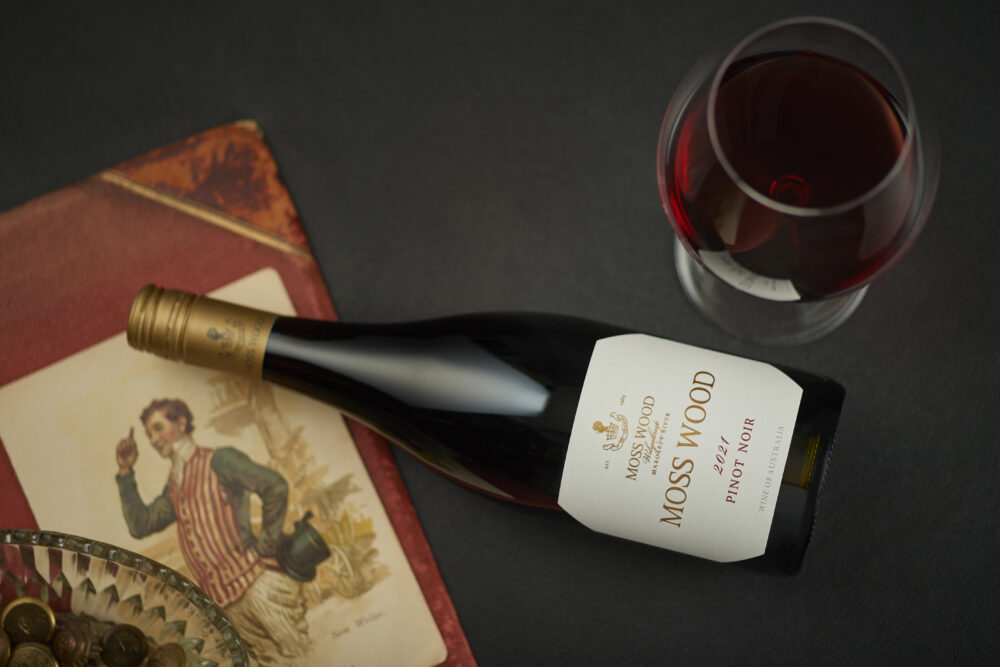
Vintage Notes
The growing conditions we experienced for the 2020/21 season were very much in our favour. All the key aspects we follow were very much as we would have liked them.
The rainfall for calendar 2020 was good, although slightly low. We received 929mm, 7% below our average but certainly plenty for growing vines. During the flowering period we received 92mm on 12 days and so this was a slight disruption for the vines. On the other hand, during that crucial period, the temperature only dropped below 8°C on 3 days, for a total of 7 hours, so things remained warm enough for a good fruit set.
Looking at the temperatures in general, the average from flowering to harvest was a very mild 18.7°C, and the vines received 968 hours in their preferred range of 18°C to 28°C and only 21 hours above 33°C. Altogether, this means the vines enjoyed good conditions but they ripened quite slowly. This can be seen in the season length, which at 109 days was about a week longer than usual and this is reflected in the harvest date, the 1st March, 5 days later than average.
We get a different and interesting insight when we look at the yields, which at 4.41 tonnes per hectare, were down 29%. The first thing to note is the bunch number per vine was down around 50%, which is very significant. This is explained by the vines still recovering from the hailstorm of October 2019. This happens because the wood available for pruning in the winter of 2020 carried the damage inflicted by the hail. If a normal season follows and no further damage happens, when pruning in the second year after the hail we’re able to choose wood that hasn’t been affected, and bunch numbers should return to average.
If the vines are carrying fewer bunches, we typically expect them to be slightly heavier at harvest but this didn’t happen in 2021, where they were down by around 13%. We suspect this happened for two reasons. Firstly, we’ve already mentioned flowering conditions were quite damp, with 92mm rain falling on 12 days. That is certain to have had an impact but we also experienced a significant wet spell in the first week of February, when a tropical low (designated 12U by the Bureau of Meteorology) dumped 82mm of rain on us.
We get a bit touchy about these late season events because they can cause all sorts of havoc. The almost-ready fruit is soft and susceptible to splitting and fungal disease, although in this instance, our spray program during the season meant we had good control. However, Pinot Noir, being the somewhat contrary thing that it is, has a very tight bunch and when the vines experience rain, they take up the moisture and the berries expand and then run out of space in the bunch and detach at the base. This can be a bit soul destroying because when we walk through the vineyard after this sort of rain, we find a light carpet of Pinot Noir berries on the ground. Had the rain stayed away for another couple of weeks, they would have been in tanks turning into wine instead of rotting on the ground.
The fun doesn’t end there because there is a second impact, that is just as amusing, if we can put it that way. Some berries remain partially detached and don’t fall off and these begin to shrivel and turn into raisins. This dehydration leads to much higher sugar levels in those berries, compared to the rest of the bunch. It also means sampling the grapes becomes more difficult because we can only guess as to what percentage of shrivelled berries we should include. It can be quite good fun in the Moss Wood lab when the analysis for the next Pinot sample comes through and we take bets as to what the number might be. We are happy to admit that our accuracy can be a challenge for the punters.
The final piece of the puzzle involves the flavour ripeness, something we focus on very closely. While the dehydrating berries provide a spike in sugar levels, the majority of the grapes remain sound and their development continues at normal pace. The result is more sugar accrued at the point flavour ripeness. This means the 2021 has our preferred flavours but we had to accept a higher Baume. On the plus side, the result is wine with pretty fruit fragrances, courtesy of the mild temperatures but the generous palate weight associated with a warmer year. In some respects, it might be considered a natural version of the Italian “Amarone” technique.
Production Notes
This juggling act which was the 2020/21 season finally came to a conclusion when these many different influences aligned on 1st March and we started harvest. All the fruit was hand-picked and delivered to the winery where it was de-stemmed and put into small, open fermenters. After destemming, we added the last 8% of the whole bunches into the tanks for some additional complexity.
Each batch was seeded with multiple yeast strains for primary fermentation. Temperatures were controlled to a maximum of 32°C and extraction of colour and flavour was by hand plunging 3 times per day. The wines remained on skins for 17 days after which they underwent malolactic fermentation in stainless steel tanks. Once that was out of the way, they were racked to 228 litre barrels, all of which were French oak and 17% were new.
After 8 months, the different batches were blended and returned to wood, where the wine stayed until October 2022, when all the barrels were racked for the final time and blended in stainless steel. At this point, fining trials were carried out but none improved the wine, so it remained unfined. It was then sterile filtered and bottled 1st November, 2022.
Tasting Notes
Colour and condition:
Deep ruby hue; bright condition.
Nose:
A bright combination of red and dark berries, including strawberry, cherry and plum, as well as musky, rose petal fragrances. The complex notes combine cinnamon, a touch of tar, and Lapsang Souchong-type spiciness with some light, toasty oak.
Palate:
The red and dark fruits continue here and so the immediate impression is bright strawberry, cherry, plum and musk flavours. These are underpinned by a balanced structure of fresh acid and firm but rounded tannin. There is good length and the wine finishes with some smoky oak.
Cellaring:
The 2023 Moss Wood Pinot Noir is a bright and friendly youngster, with lively fruit flavours and good balance and can certainly be enjoyed now. However, like its many siblings, it has a long life ahead in the cellar, for those who are prepared to wait. It should develop some bottle complexity by 10 years of age but full maturity will take at least 2 decades. By then it will still display its red and dark fruits but will be much more complex, showing the variety’s famous earthy notes of mushroom, meat, farmyard and freshly turned soil.
| Wine Facts | |
|---|---|
| Median Harvest Date | 1st March, 2021 |
| Harvest Ripeness | 14.0° Baume |
| Yield | 5.96 t/ha |
| Growing Season Ave Temperature | 18.7°C |
| Number of hours accrued between 18 and 28°C | 968 hours |
| Number of hours above 33°C | 21 hours |
| Day Elapsed between Flowering and Harvest | 109 days |
| Bottled | 1st November, 2022 |
| Alcohol | 14.5% |
Moss Wood 2023 Semillon
Vintage Notes
Regular readers of this august journal, patient souls that they are, have seen all sorts of stories about vintage conditions and the challenges we faced. Hopefully they’ve all been interesting and helped explain the style of wine we produced in any given year. Yet, every now and then, a season comes around where we just have to take our hat off to Mother Nature and look on in awe. The 2023 is one of those and she did the right thing by us, no doubt.
Why was it so good? Where do we begin? Let’s look at the rainfall. It could be the 10% above average rainfall of 1114mm we received during calendar year 2022, ensuring plenty of soil moisture for the vines. Or it might be that the rain eased off when we needed it to. During flowering, we received only 8 days and 21mm of rain, while only 19mm fell during January, February and March, so there was no threat of dilution or disease.
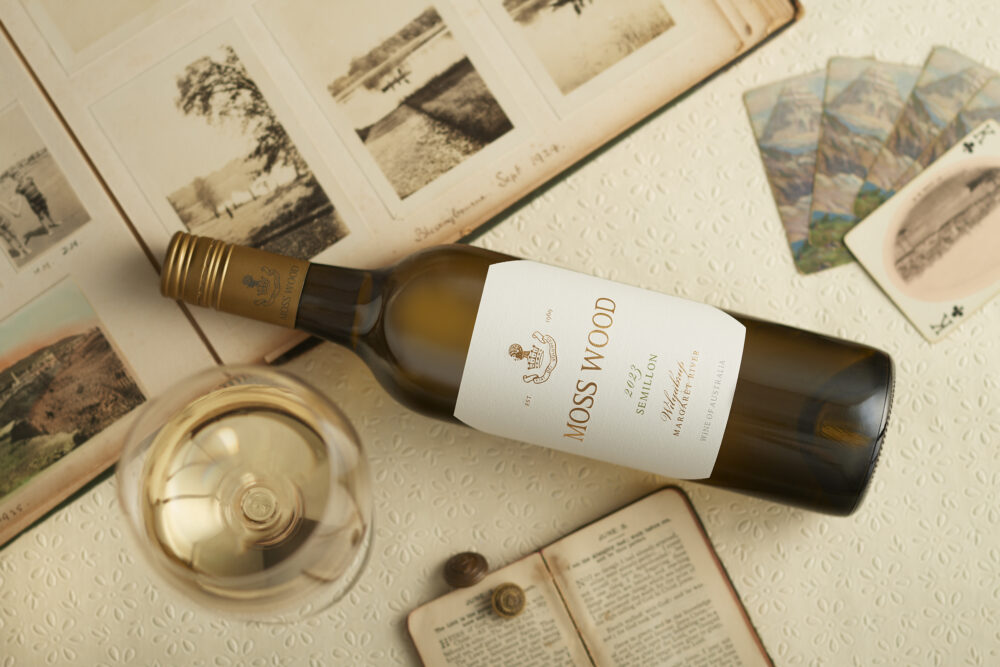
Or, perhaps it was the temperatures? During flowering there were only 8 days when it dropped below 8°C and only for a total of 25 hours, so just what we need. Yet, through the summer, the temperatures were consistently warm but not hot, with our hottest day being 37.9°C. All the vines revelled in these conditions and the semillon was no exception. It received 1018 hours in the preferred temperature range of 18-28°C and a total of 49 hours above 33°, more than enough to ensure easy progress to full flavour ripeness. The average temperature across the season was a very pleasant 20.1°.
So, what does all this mean? It’s quite simple, really – we had a classic Margaret River summer and a classic year resulted. The 2023 combined good crops and high quality and we suspect it’s one of the great “all round” vintages, when all our varieties produce classic wines, which will get very special mention in the future and sit comfortably with its famous siblings like 2018, 2014, 2005, 2001, 1995, 1994, 1985, 1980 and possibly even the revered 1975.
When we have years like this, the outcomes can seem quite boring and we often say that anyone could have made wine in this sort of a year. Here are the key facts for semillon. The crop level was a very respectable, for a 50 year old, dry-farmed vineyard, of 8.58 tonnes per hectare, although still down 11%. Hand harvesting was done on 16th March, 5 days later than average and the ripeness was 13.5° Baume, a little above the normal 12.8°.
Production Notes
The fruit was delivered to the winery where it was sorted and then whole-bunch pressed. The must was clarified and fermented in stainless steel. We make this point because Moss Wood Semillon is the only wine we make that does not spend time in oak. It was seeded with multiple yeast strains for primary fermentation and once this was completed, the wine was racked and adjusted with SO2 and fining trials were carried out. None improved the tannin balance so the wine is unfined. It was then sterile filtered and bottled on 3rd July.
Tasting Notes
Colour and condition:
Pale to medium straw hue, with green tints; bright condition.
Nose:
Lifted fruit aromas and distinctly fragrant, more so than usual. It certainly shows traditional Semillon characters of fig, apple and lemon but has added dimensions of quince, pear and peach. There is a complexity of lanolin, mushroom and malt biscuits, although this sits in the background for the moment, behind a wall of fruit.
Palate:
This continues the fruit depth theme of the ’23 vintage, with bright fig, pear, granny smith apple and citrus flavours, combining with fresh acidity and full body to give length and generosity. The other feature of 2023 is well balanced tannins, giving the wine a firm but smooth finish.
Cellaring:
We suspect the 2023 Moss Wood Semillon will represent a challenge. It’s such a gorgeous young wine, it can be enjoyed immediately and we are happy to encourage those who like bright young wines to do so. However, for those with patience, it will last decades in the cellar and we recommend at least 10 years to allow the wine to develop some bottle bouquet. Even then it will still be an awkward teenager and will need at least a further 10 years to show its true class.
| Wine Facts | |
|---|---|
| Median Harvest Date | 16th March, 2023 |
| Harvest Ripeness | 13.5⁰Be |
| Yield | 8.58 t/ha |
| Growing Season Ave Temperature | 20.1⁰C |
| Number of hours accrued between 18 and 28⁰C | 1018 hours |
| Number of hours above 33⁰C | 49 hours |
| Days Elapsed between Flowering and Harvest | 110 days |
| Bottled | 3rd July 2023 |
| Alcohol | 14.50% |
Order
OUR WINES:
Contact
MOSS WOOD:
Location: 926 Metricup Road, Wilyabrup WA
Postal: PO Box 225, Cowaramup WA 6284
Phone: +61 8 9755 6266
Fax: +61 8 9755 6303
Follow us on
SOCIAL MEDIA:

